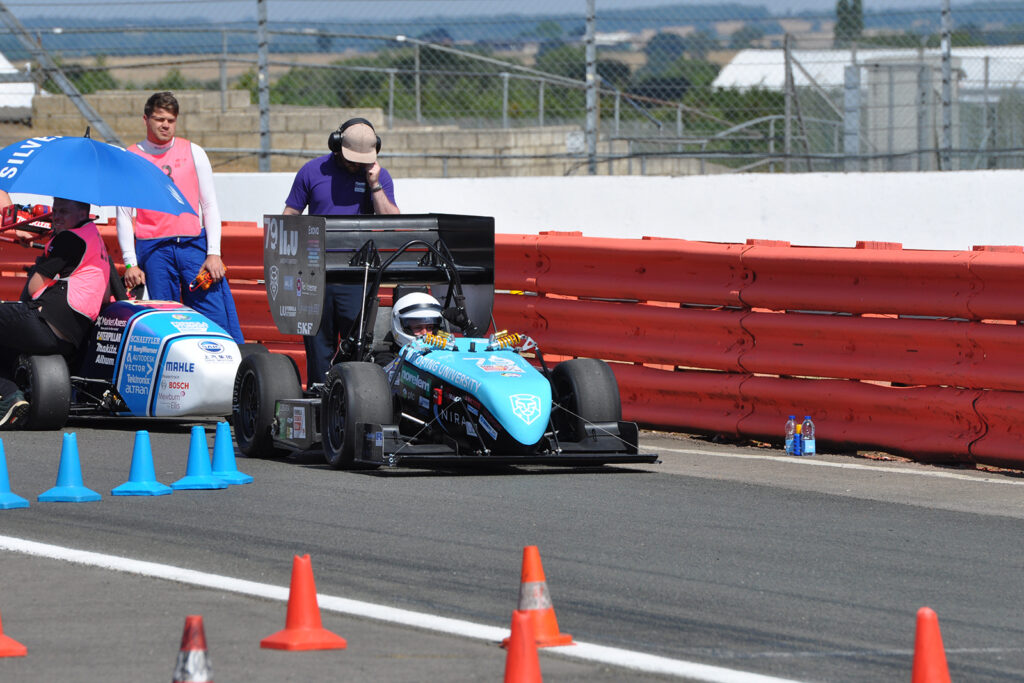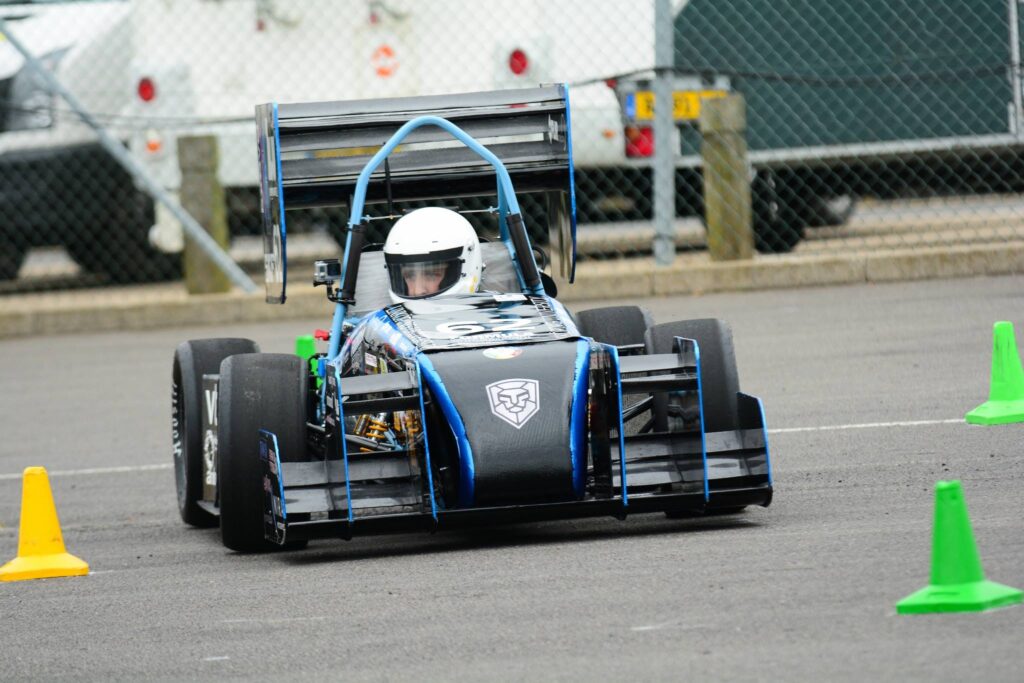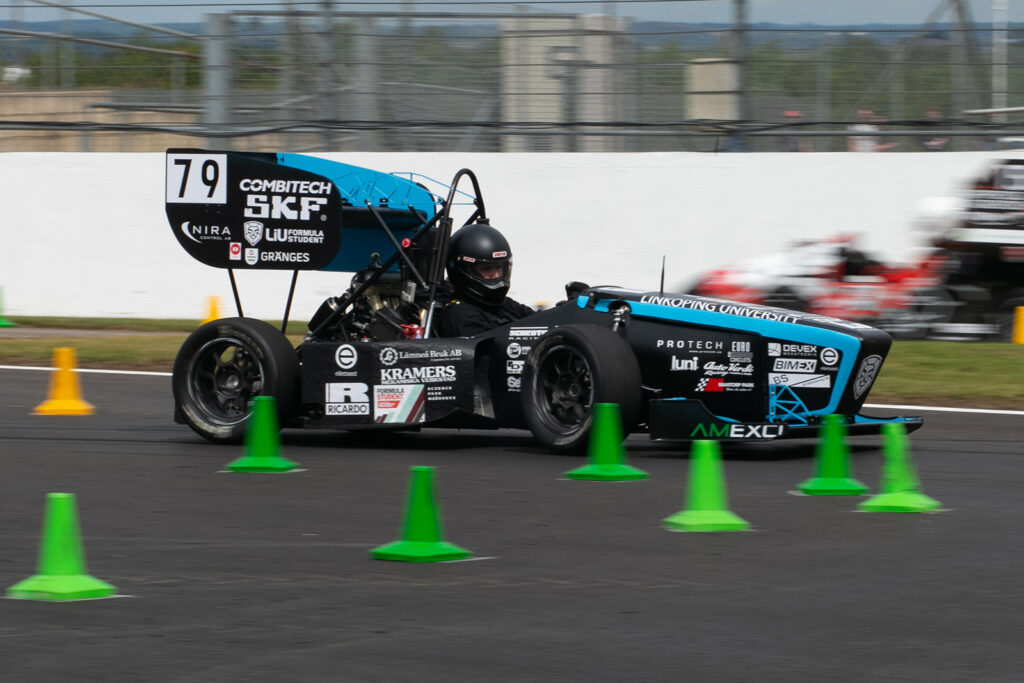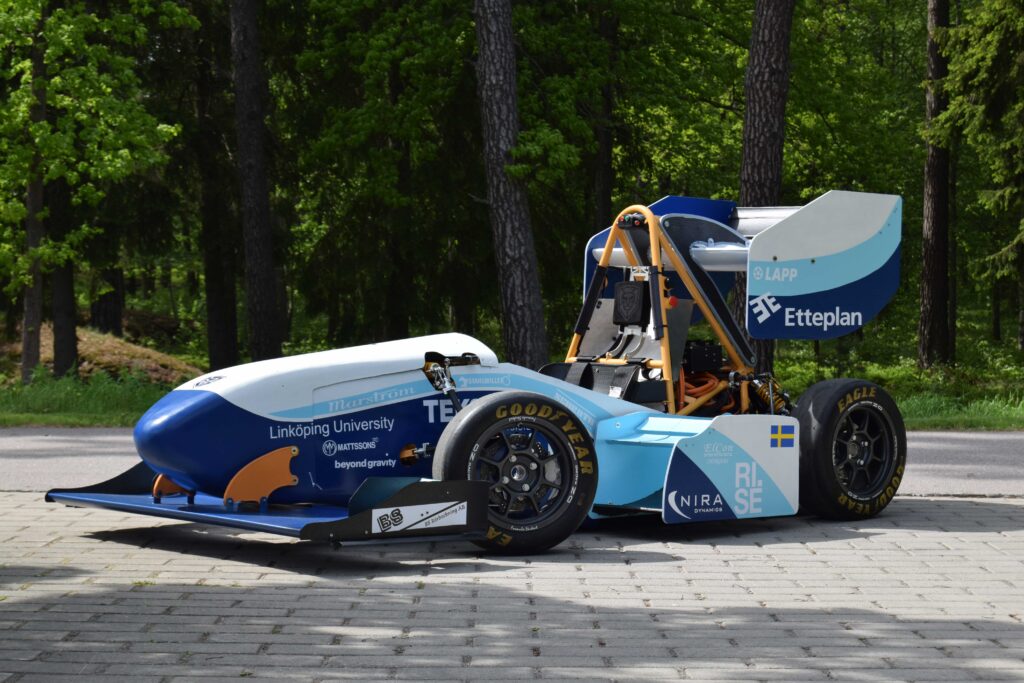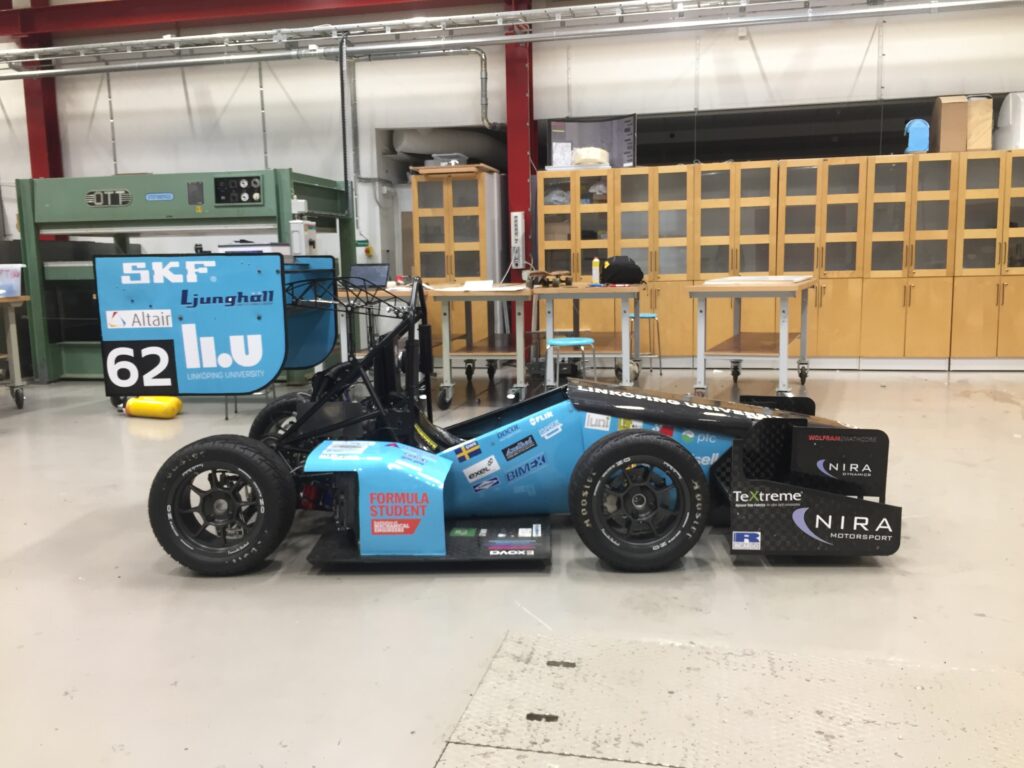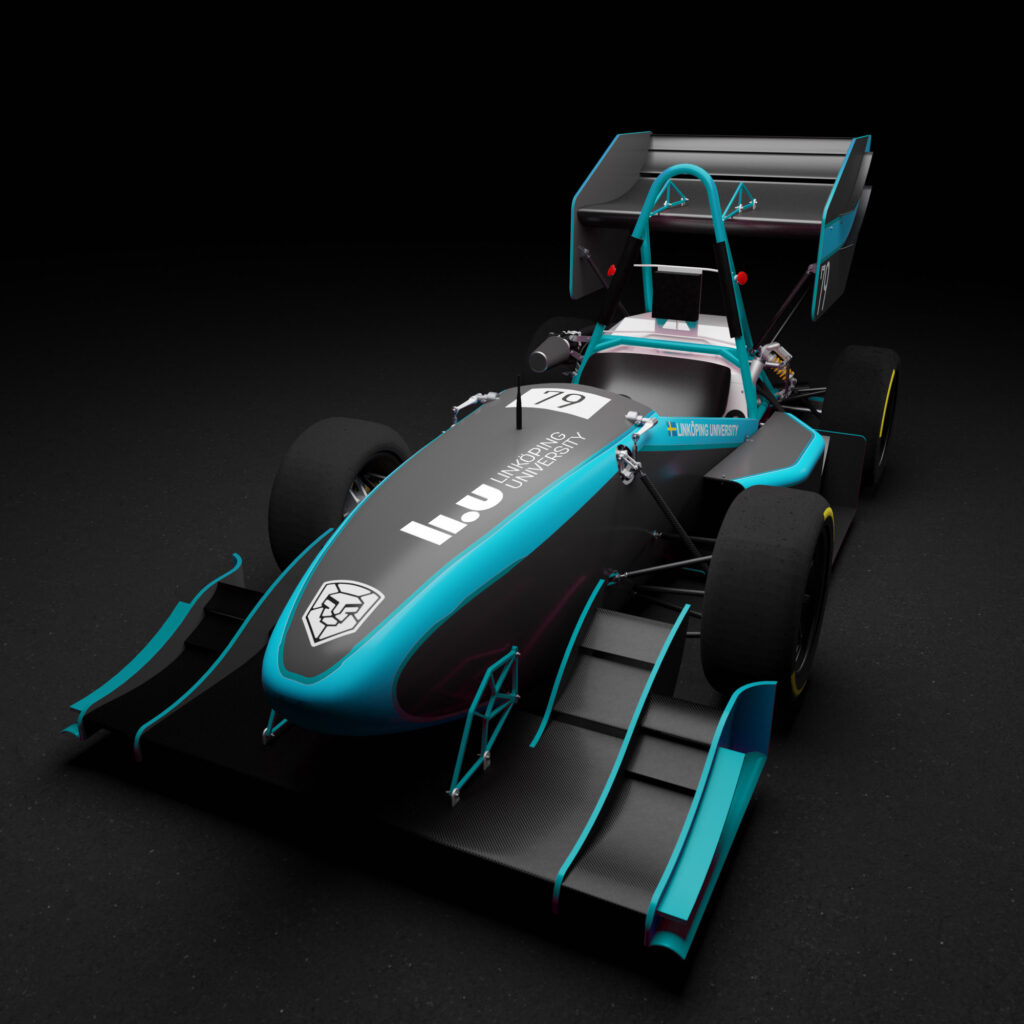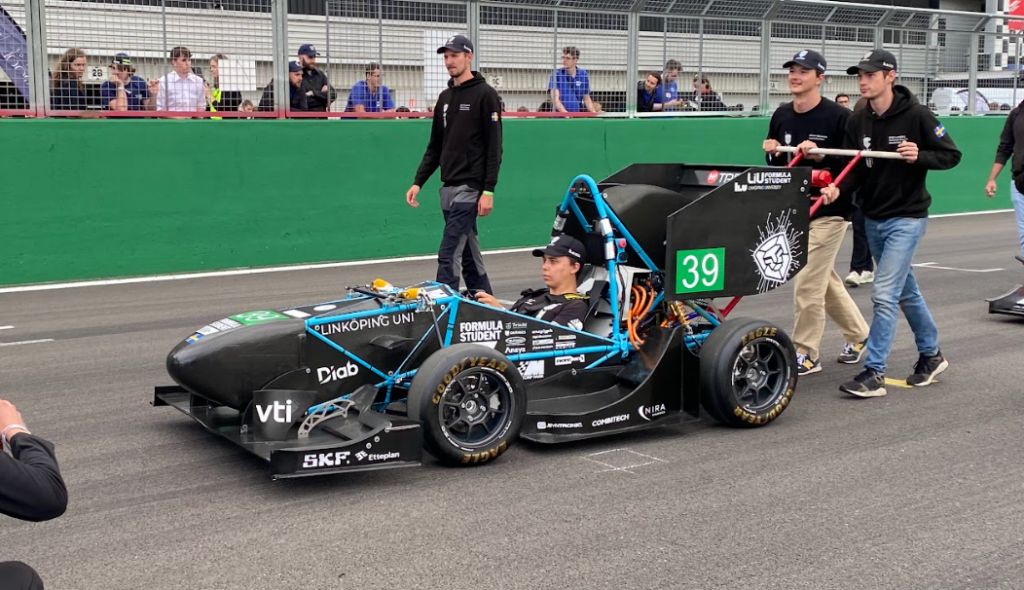eric
01
"How many parts are there in this thing"
ERIC 01, or ELiTH Racing Internal combustion Car 01, was the first Formula Student car designed and built at Linköping University. With the overall goal of getting the car through scrutineering and being able to participate in one competition during the year, the resulting design was a simplistic car with a steel spaceframe, 13” wheels and a Honda CB 600F engine. Still, the team participated in both IMechE Formula Student and Baltic Open (Darmstadt) during 2012. The team was especially proud of the feedback and positive responses from competitors, scrutineers and judges regarding their first car. And thus, LiU Formula Student (at that time ELiTH Racing) hit the ground running.
-FSUK-
Overall place: #92 (of 97)
Cost Event: #96
Business presentation: #82
Engineering design: #54
Acceleration: #-
Skid Pad: #-
Autocross: #29
Endurance: #38
Fuel Efficiency: #-
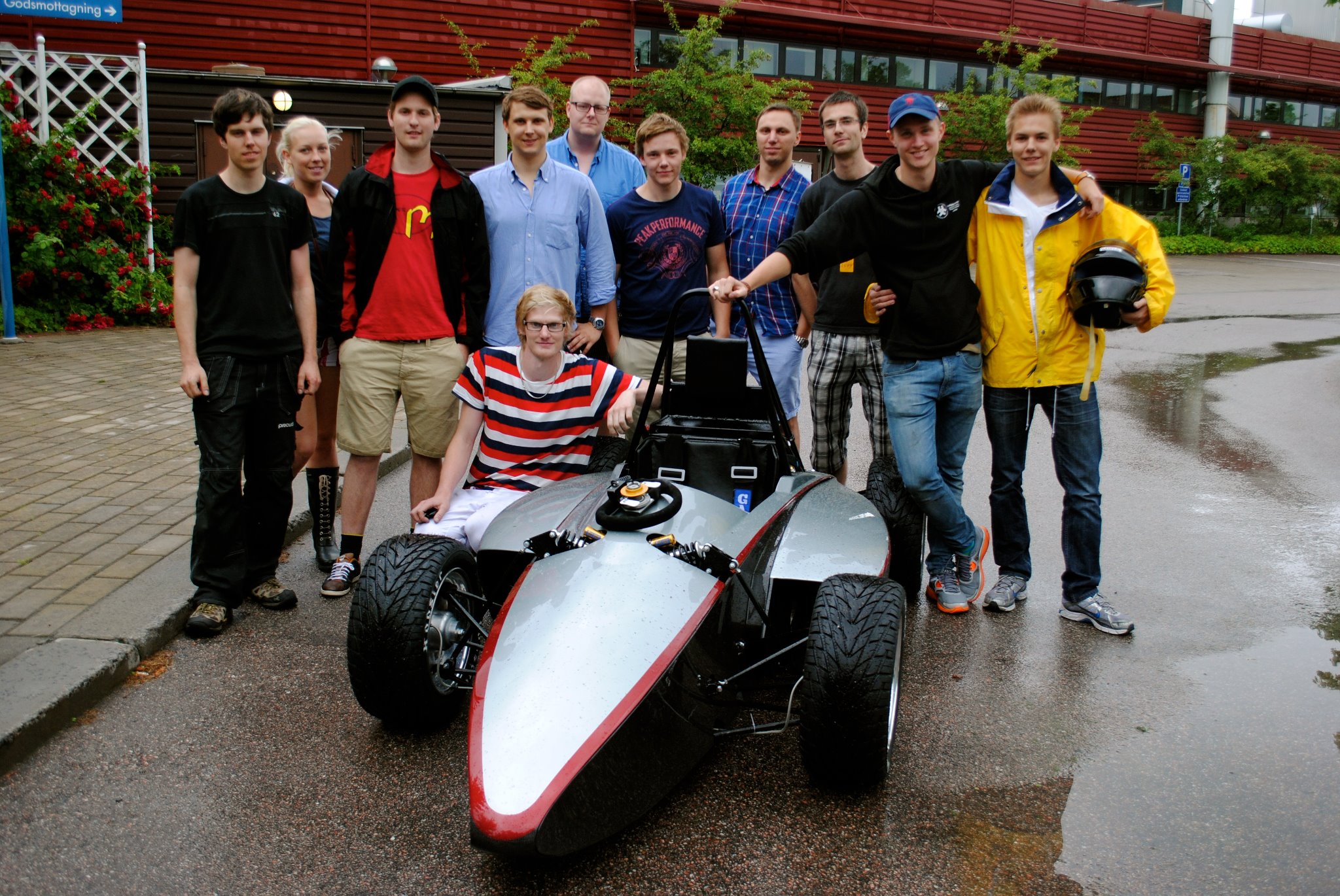
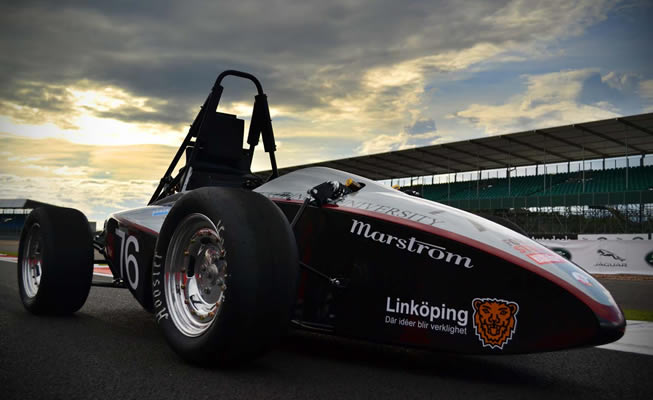
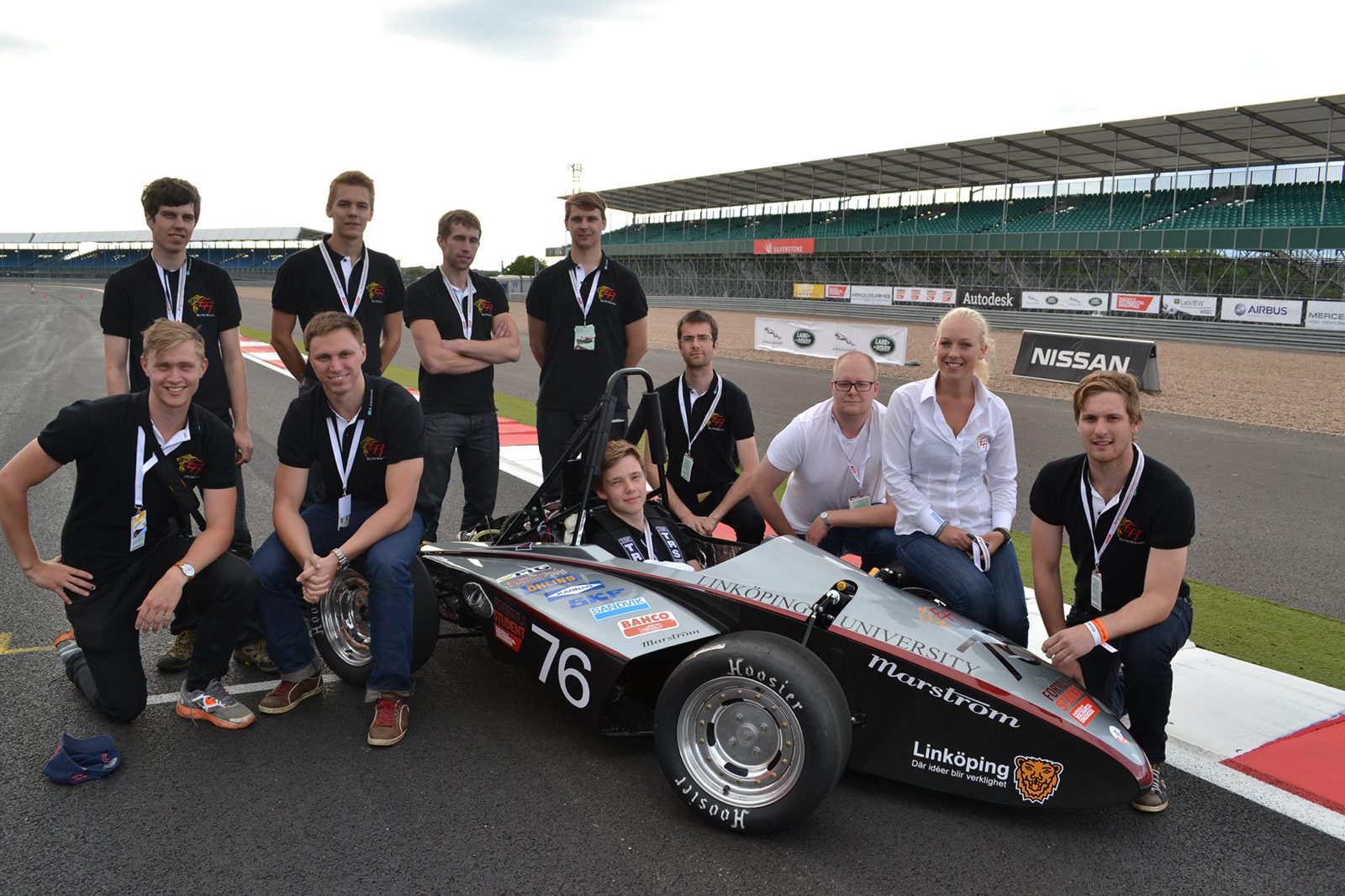
-specifications-
Engine: Honda CB600F
Differential: Quaife qba7r
Chassis: Tubular CrMO spaceframe
Body: Carbon fibre
Suspension: Double unequal length A-arms, push/push-rod.
Wheelbase: 1615 mm
Weight: 289 kg
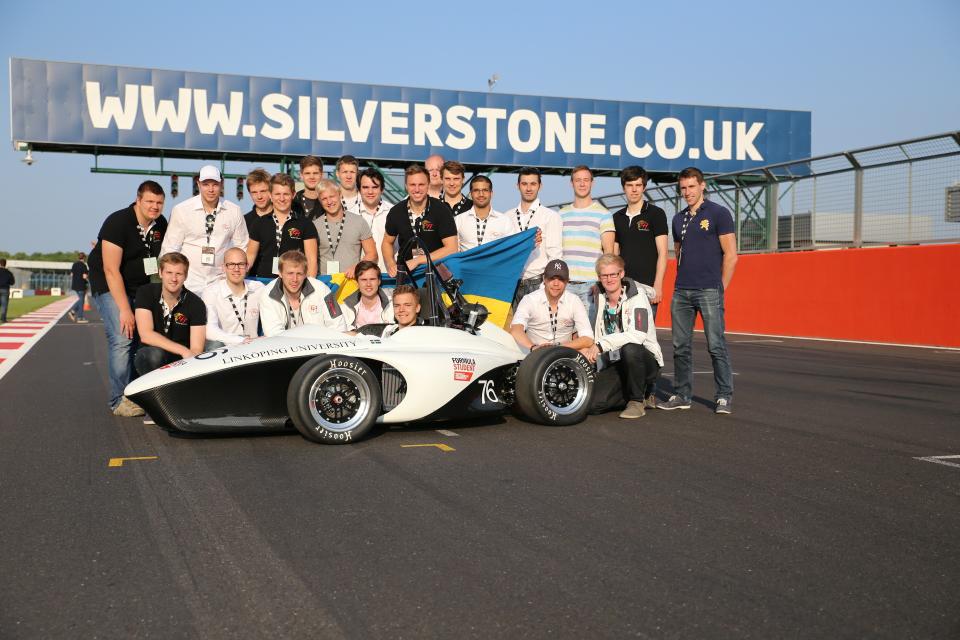
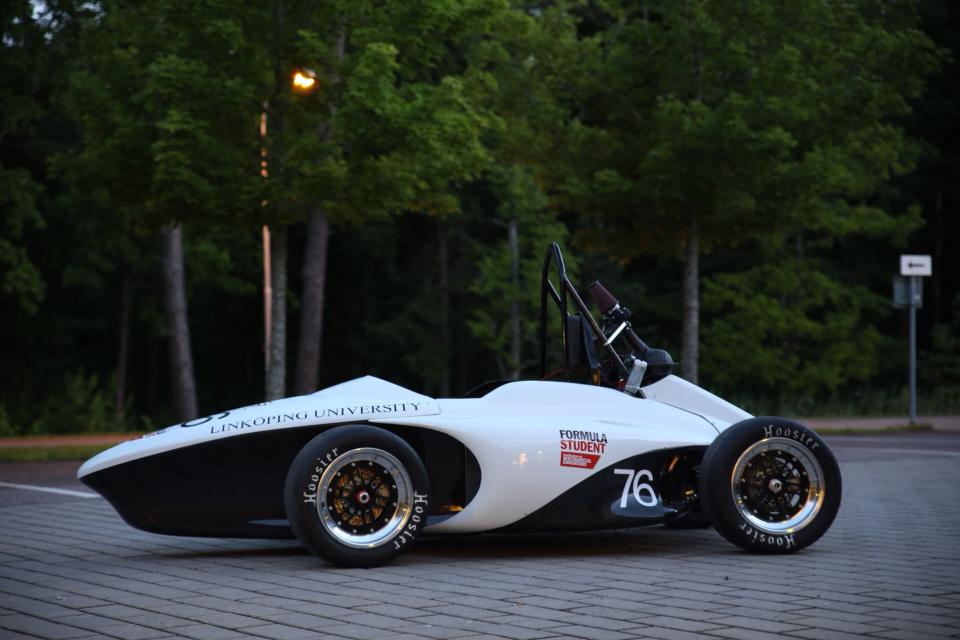
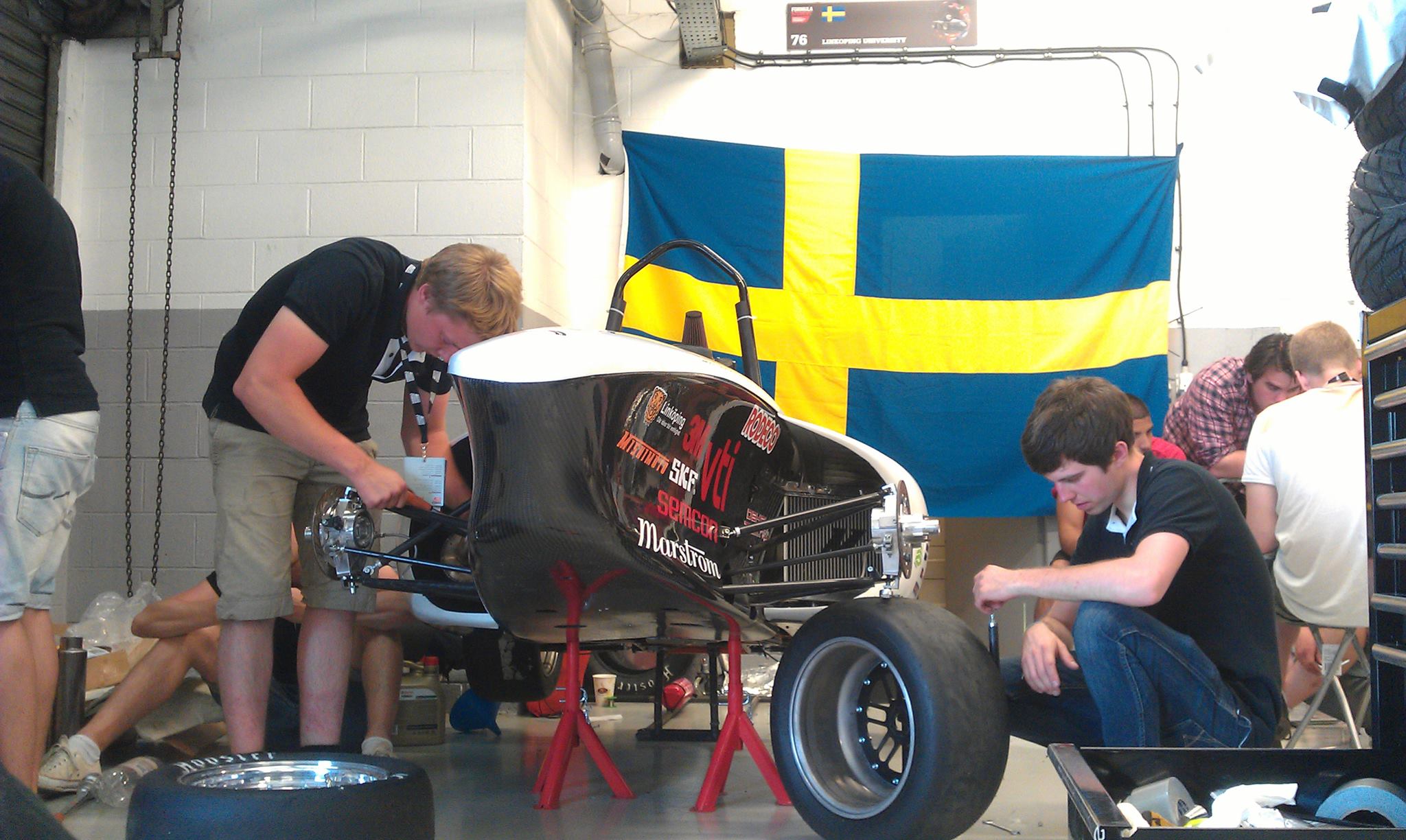

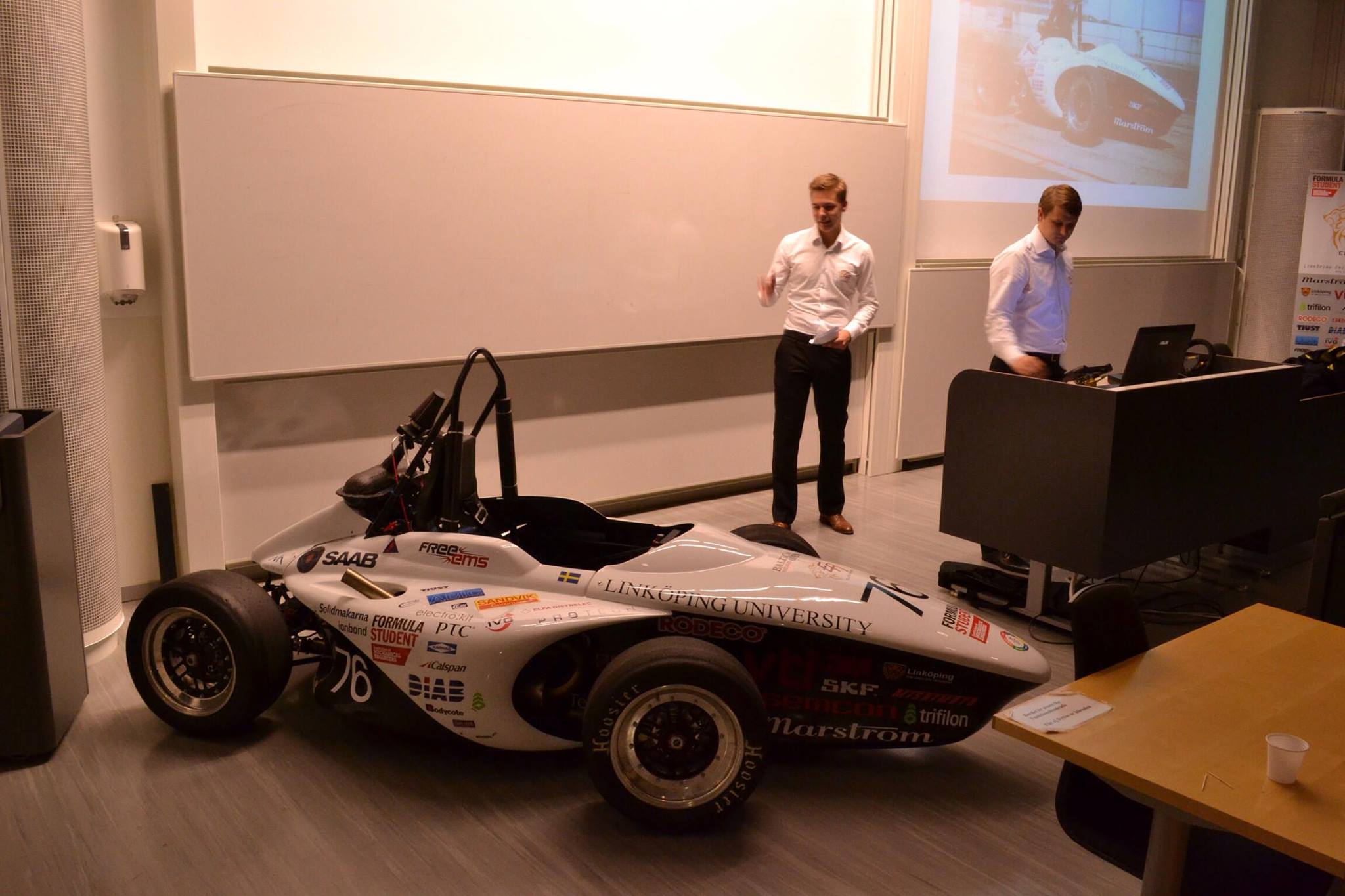
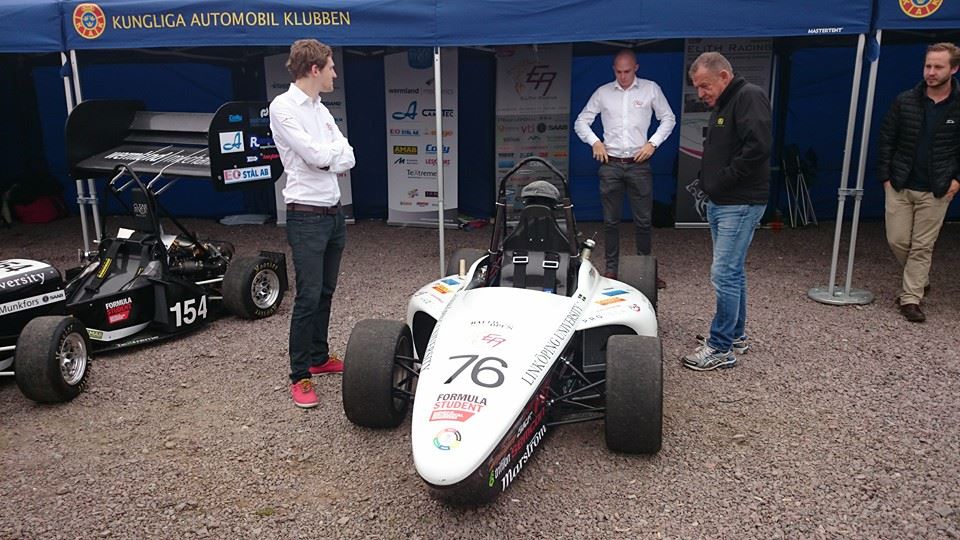
-specifications-
Engine: Honda CBR600RR
Differential: Drexler LSD
Chassis: Tubular CrMO spaceframe
Body: Carbon fibre
Suspension: Double unequal A-arms, push/pull-rod, vertically/horizontally oriented spring and damper
Wheelbase: 1580 mm
Track Width [F/R]: 1200 / 1160 mm
Wheel: 13×7.5″ BBS rim, custom center
Tires: Hoosier 20.0 x 7.5-13″ R25B
Weight: 222.5 kg
ER
13
"Let's go for top 20"
With one car already being built and competed, the bar was raised for 2013. Instead of focusing on just getting to the competition, the team wanted to be competitive as well. The team focused on in-house design and weight saving, shaving of circa 70 kilos in the end while still keeping the spaceframe, 13” wheels and a 600cc four-cylinder engine (this time the Honda CBR600)! Components designed by the team included throttle body and mechanism, steering rack, steering wheel, wheel centers and ECU/datalogging system (with a great amount of assistance from FreeEMS), in order to increase understanding and have better control of the design and manufacturing. The team competed at two competitions this year as well, at Silverstone (IMechE Formula Student) and in Helsinki (Baltic Open).
-FSUK-
Overall place: #63 (of 83)
Cost Event: #53 Business presentation: #74
Engineering design: #60
Acceleration: #-
Skid Pad: #-
Autocross: #47
Endurance: #51
Fuel Efficiency: #-
ER
14
"the walls came crumbling down"
During this year, the team hit a significant bump in the road. This means that sadly, the only things that remains of ER14 are these renderings. No car was produced this year.
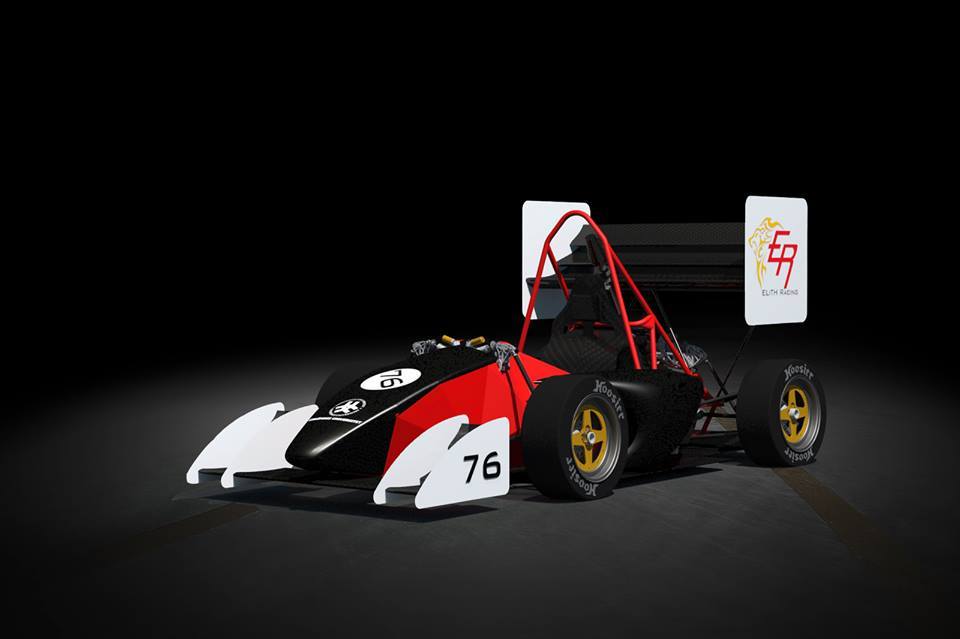
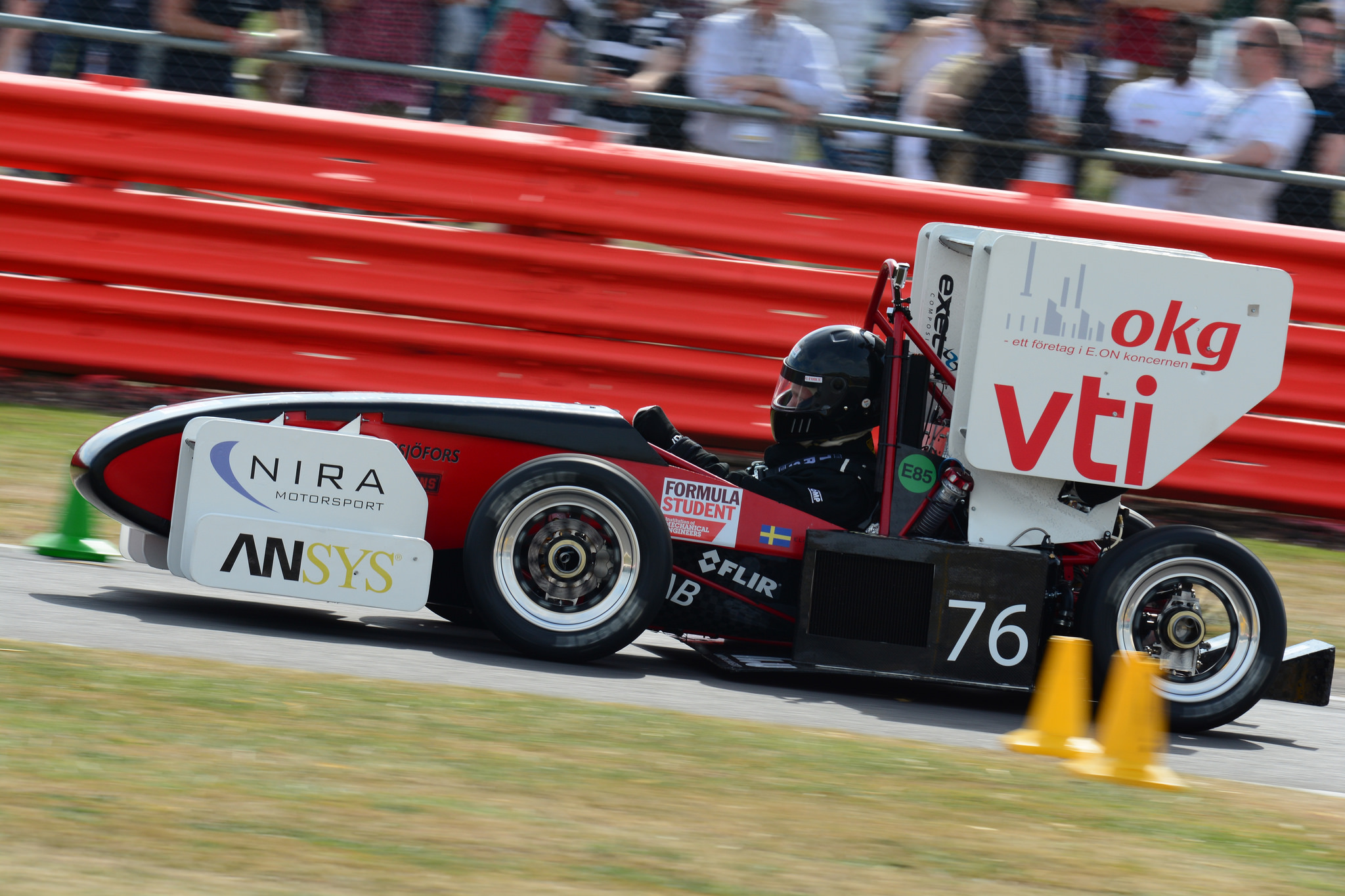
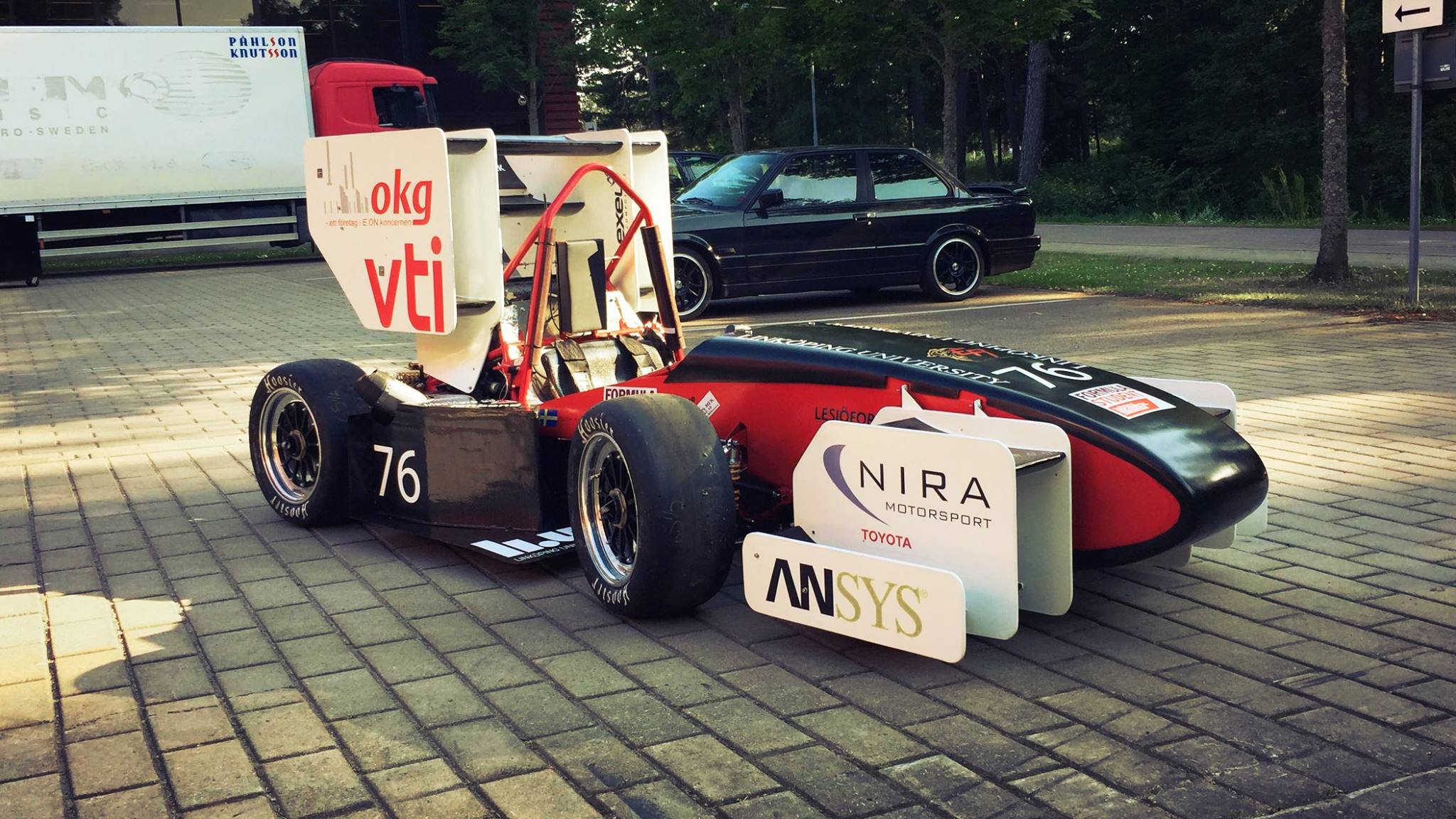
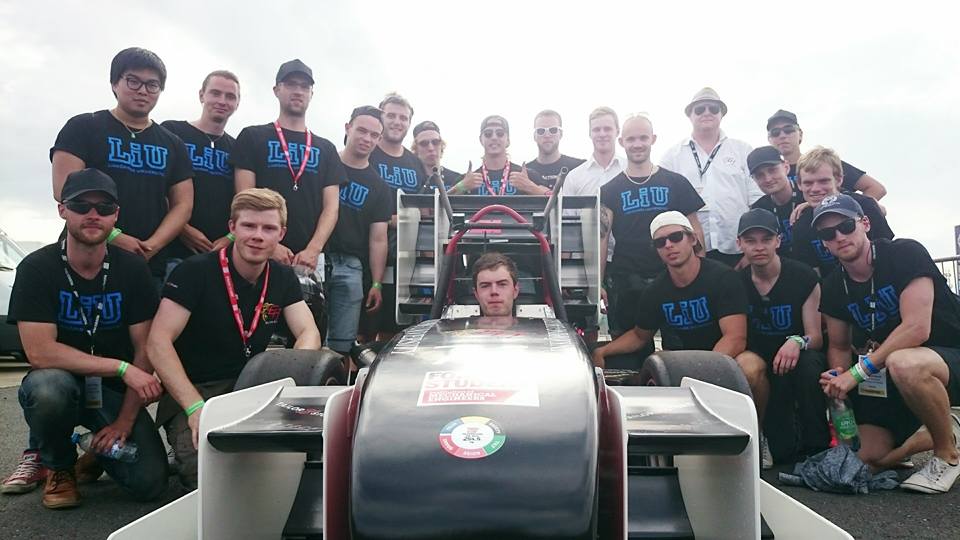
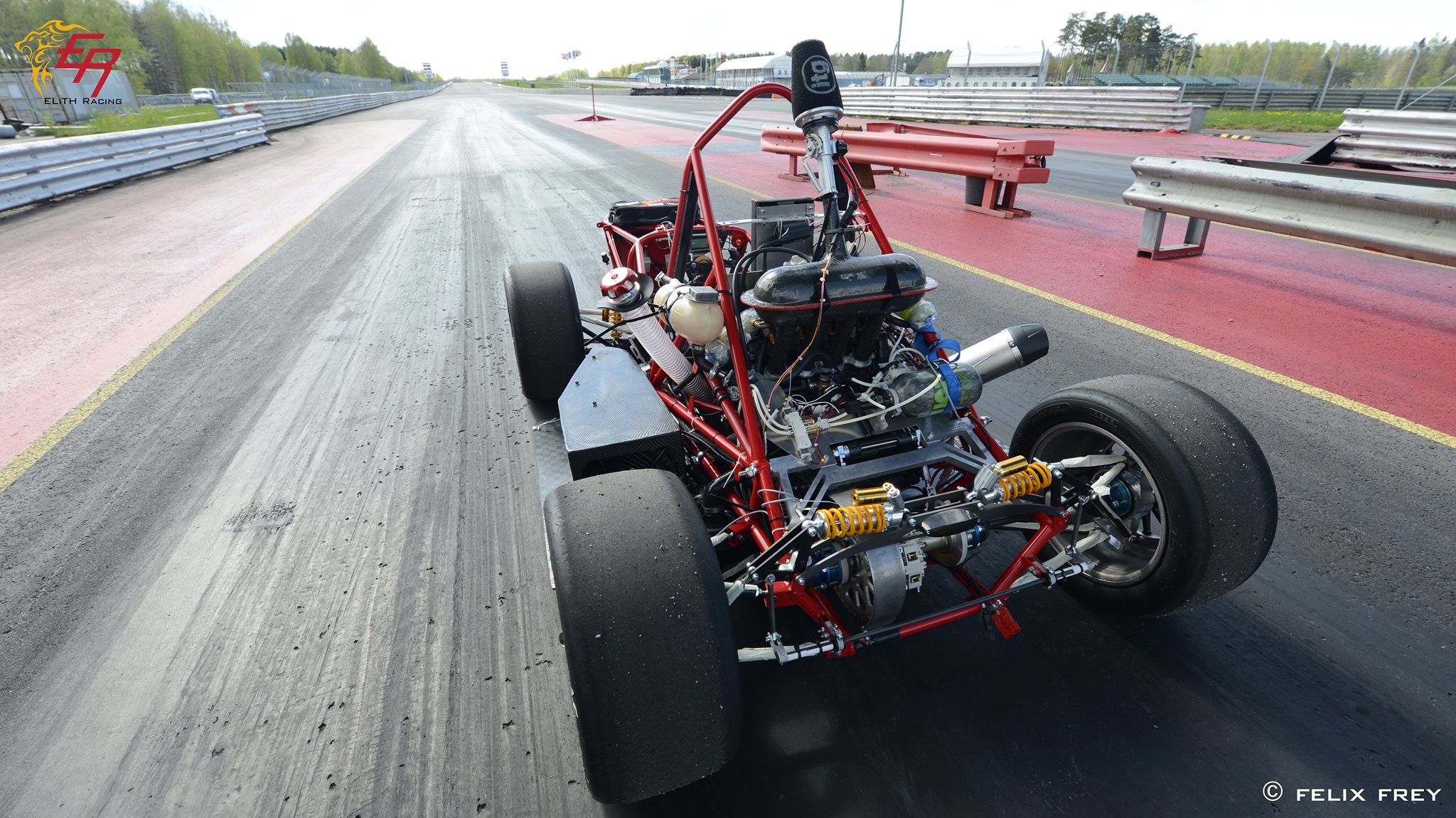
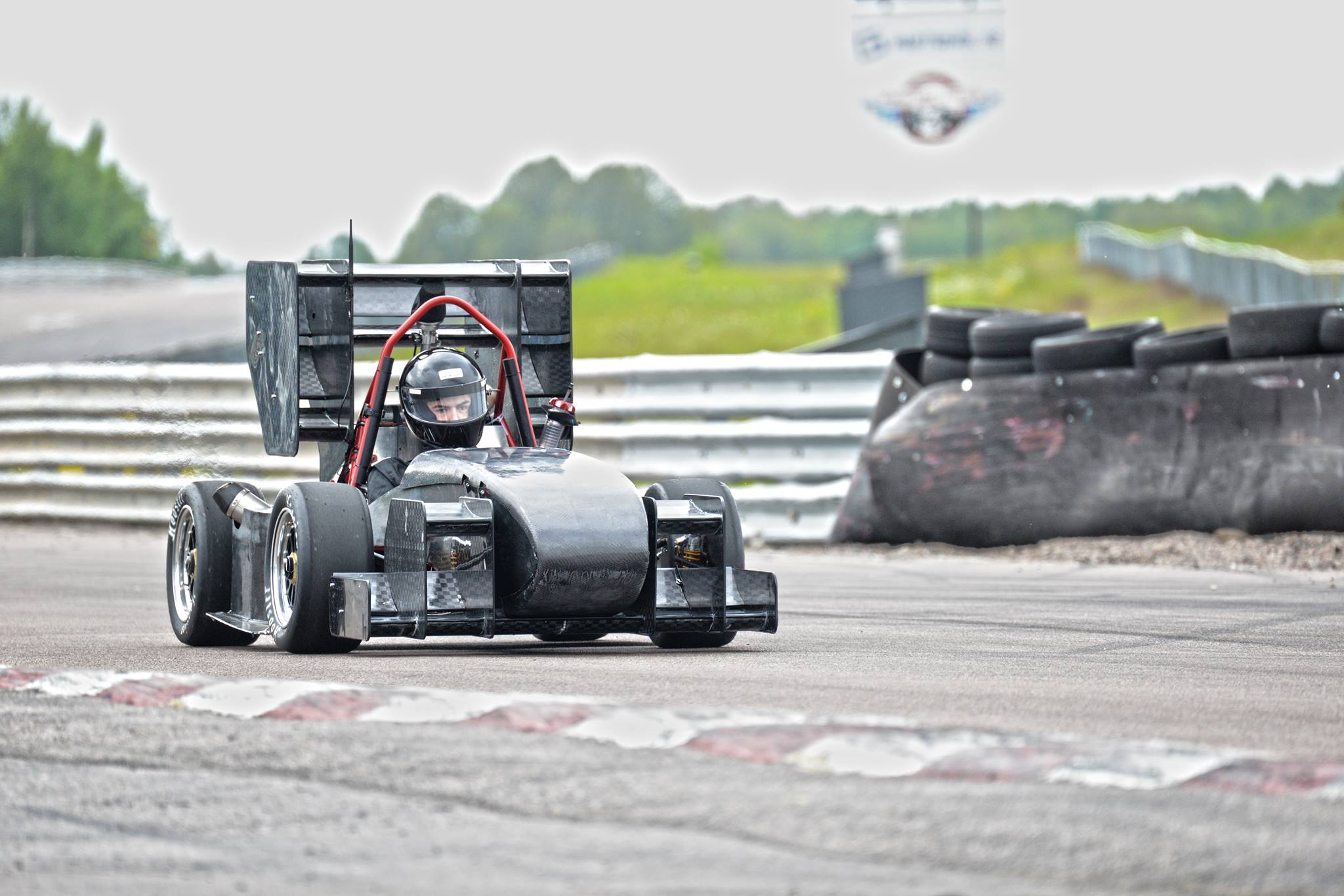
-specifications-
Engine: Honda CBR600RR
Differential: Drexler LSD
Chassis: Tubular steel spaceframe
Body: Carbon fibre
Aero: Front and rear wing, underbody with diffuser.
Suspension Front: Double unequal length A-arms, pull-rod, horizontally oriented Öhlins TTX25 dampers
Suspension Rear: Double unequal length A-arms, push-rod, vertically oriented Öhlins TTX25 dampers
Wheelbase: 1580 mm
Track Width [F/R]: 1160 / 1120 mm
Wheel: 13×7.5″ BBS rim, custom center
Tires: Hoosier 20.0 x 7.5-13″ R25B
Weight: 254.4 kg
ER
15
"it ain't pretty, but it works"
With a new focus in reliability and testing time, the team restarted for 2015 and had ER15 running well in time for the competition. With a spaceframe and the (at the time) tried and tested Honda CBR600 engine, the car was again a simplistic design; but this time with added wings and an aerodynamic undertray. The focus was set on DFM, or Design for Manufacturing, to enable short manufacturing times and enable multiple suppliers. This car competed in IMechE Formula Student 2015, and scored the team’s highest Design event score yet with 105 points.
-FSUK-
Overall place: #33 (of 92)
Cost Event: #72
Business presentation: #69
Engineering design: #24
Acceleration: #27
Skid Pad: #28
Autocross: #27
Endurance: #28
Fuel Efficiency: #19
ER
16
"Evolution-not revolution"
For 2016, the team continued with the main concept from ER15 and focused on weight saving and datalogging. While earlier cars had datalogging capabilities, the data captured was not used in the design process. This called for a redistribution of resources, in order to be able to use testing data for future design validation. The team also aimed to reduce the workload by buying some more, carefully chosen, off the shelf components such as wheels. In the end, the car weighed 16 kilos less than its predecessor and competed in IMechE Formula Student 2016.
-FSUK-
Overall place: #47 (of 106)
Cost Event: #81
Business presentation: #64
Engineering design: #50
Acceleration: #38
Skid Pad: #39
Autocross: #35
Endurance: #67
Fuel Efficiency: #-
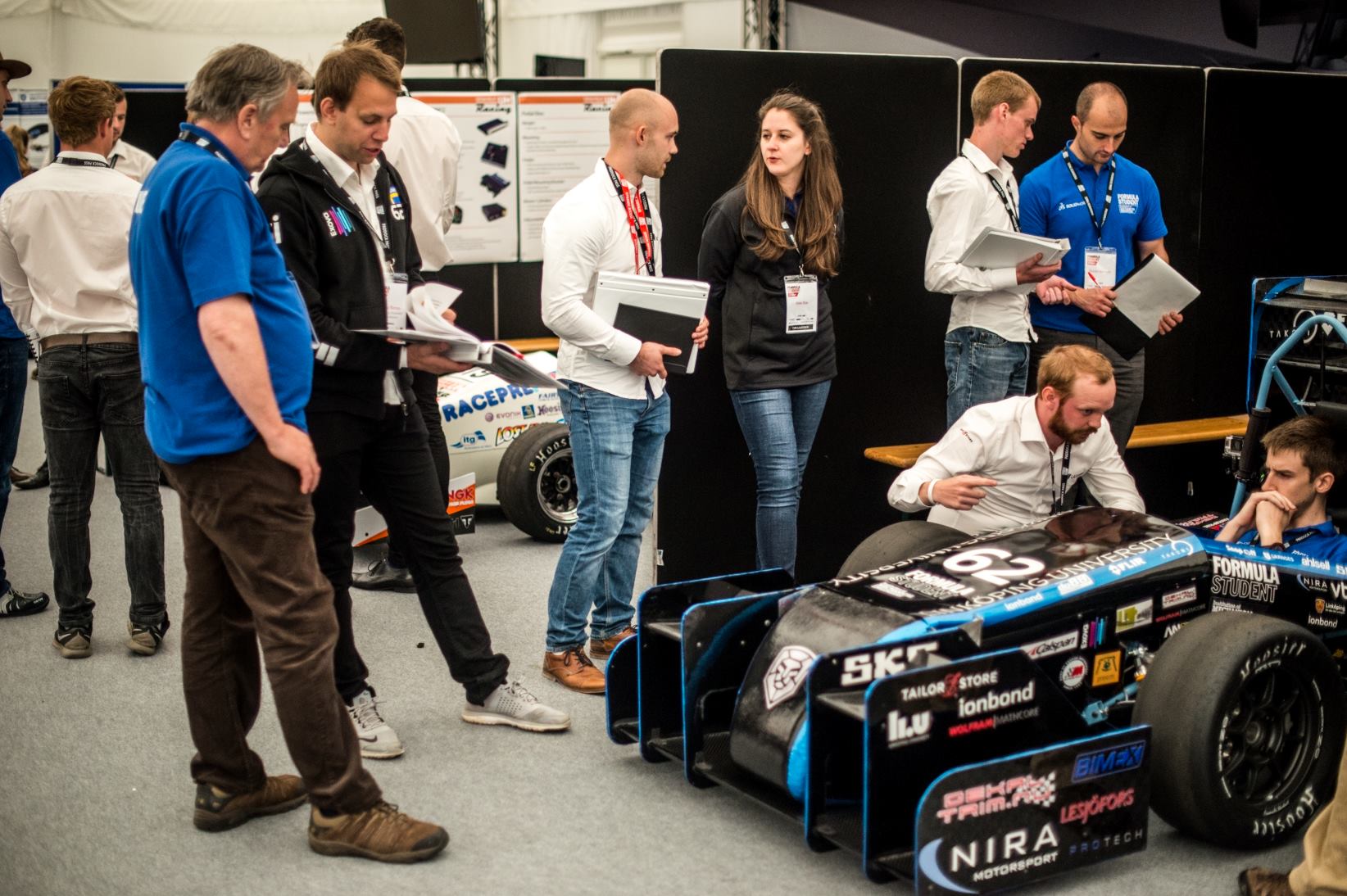
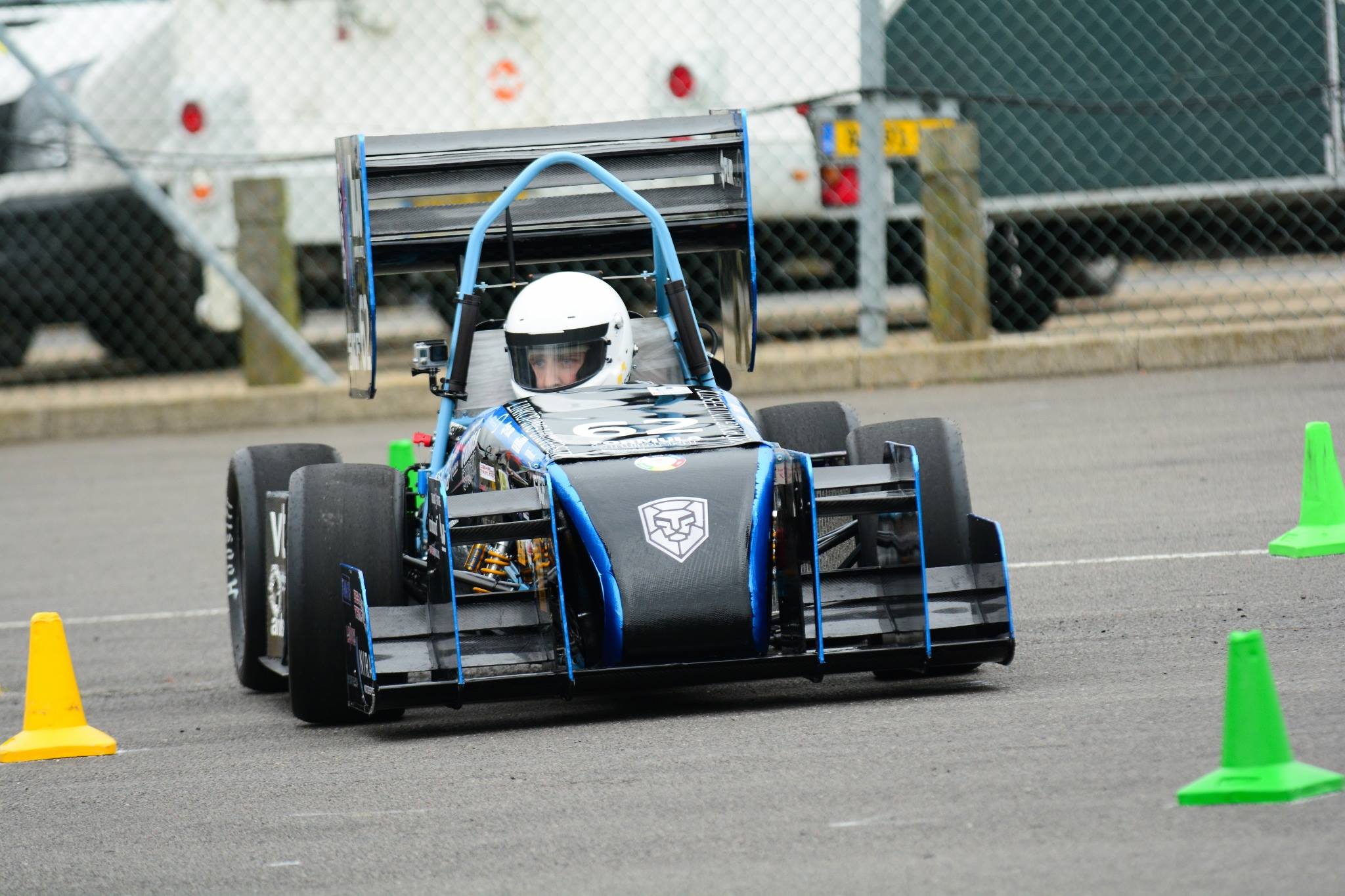

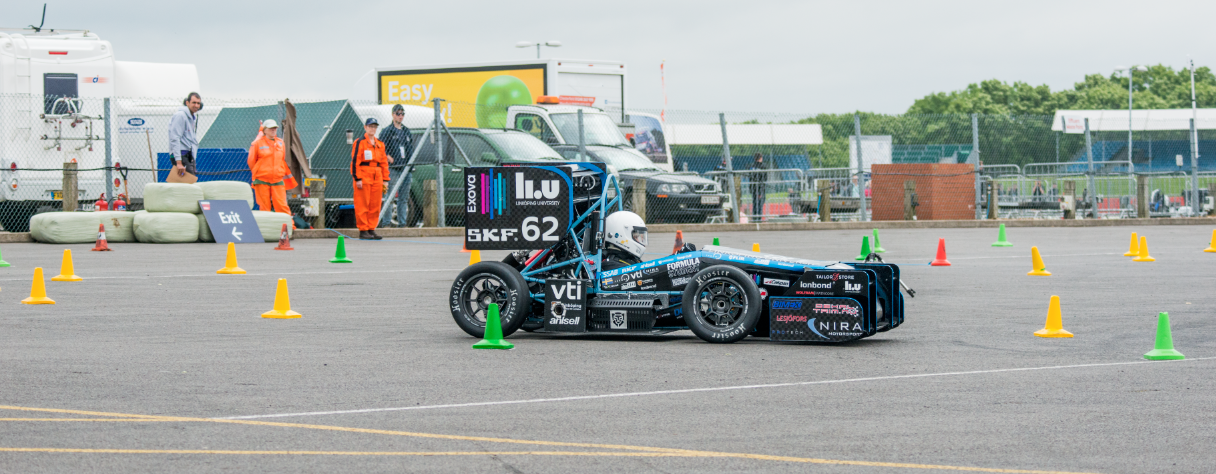
-specifications-
Engine: Honda CBR600RR
Differential: Drexler LSD
Chassis: Tubular DOCOL spaceframe
Body: Carbon fibre and plastic body
Aero: Front and Rear Wing
Suspension Front: Double unequal length A-arms, pull-rod, horizontally oriented Öhlins TTX25 dampers
Suspension Rear: Double unequal length A-arms, push-rod, vertically oriented Öhlins TTX25 dampers
Wheelbase: 1580 mm
Track Width [F/R]: 1160 / 1120 mm
Wheel: 13×7.0″ OZ magnesium rims
Tires: Hoosier 20.0 x 7.5-13″ R25B
Weight: 239.5 kg
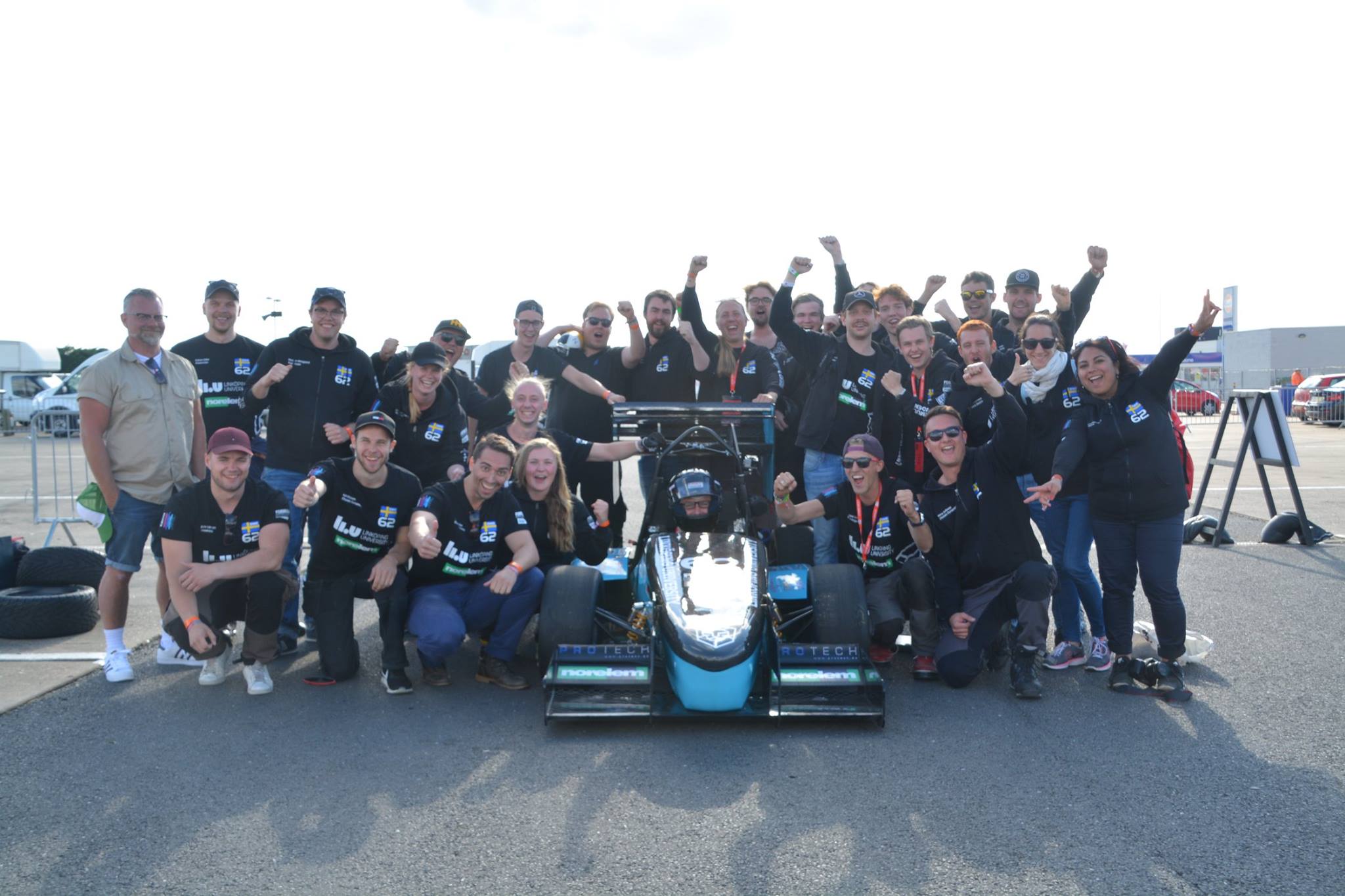
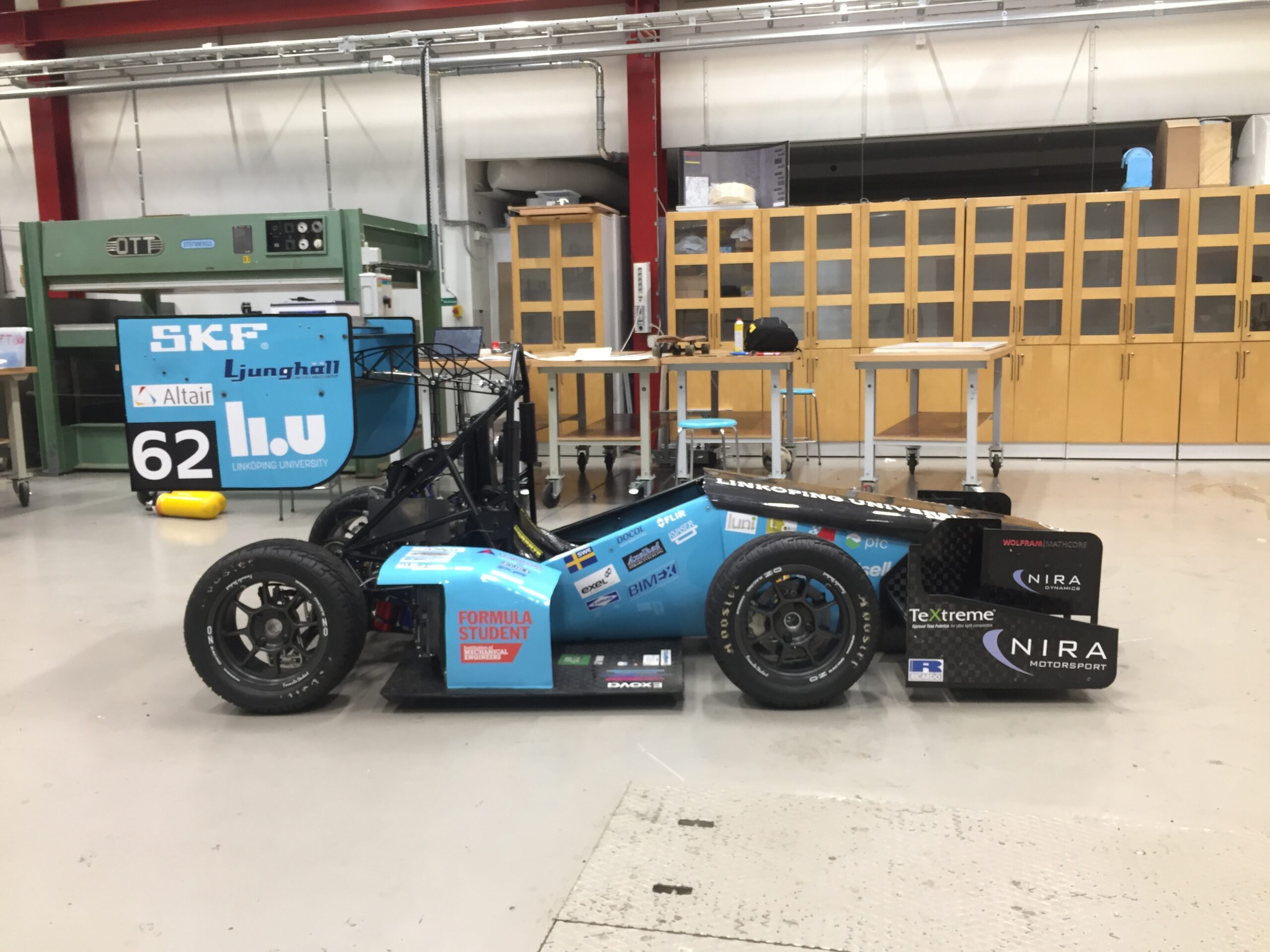
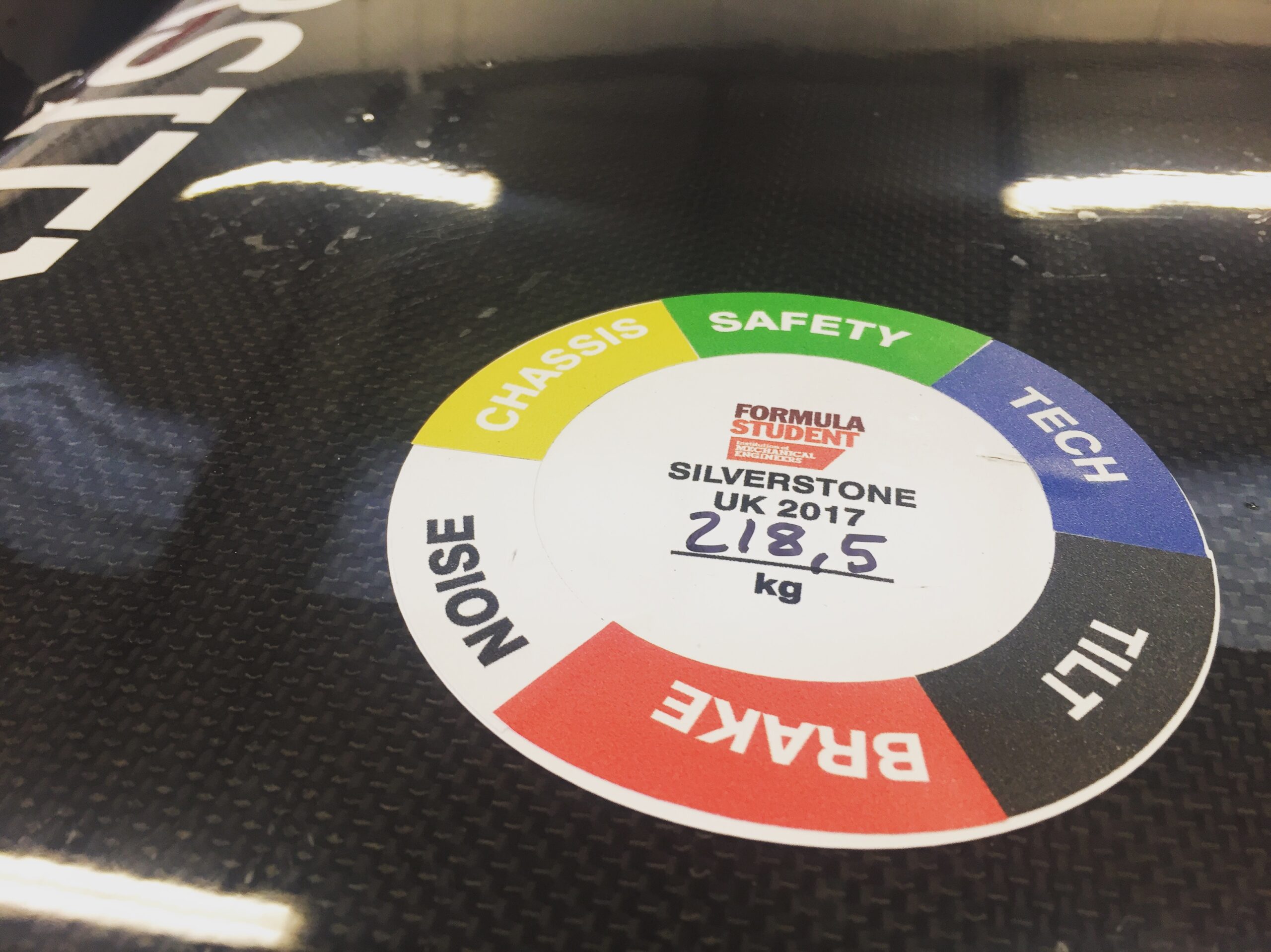
-specifications-
Engine: KTM RF4 (450 SX-F)
Differential: Drexler LSD
Chassis: Tubular steel spaceframe
Body: Carbon fibre
Aero: 600 Nm at 80 km/h
Suspension Front: Double unequal length A-arms, pull-rod, vertically oriented Öhlins TTX25 dampers
Suspension Rear: Double unequal length A-arms, push-rod, vertically oriented Öhlins TTX25 dampers
Wheelbase: 1580 mm
Track Width [F/R]: 1160 / 1120 mm
Wheel: 13×7.0″ OZ magnesium rims
Tires: Hoosier 20.0 x 7.5-13″ R25B
Weight: 218.5 kg
ER
17
"THE WAY FORWARD IS A SMALLER ENGINE"
For 2017, the team focused on going from the four cylinder Honda CBR 600 to the much smaller and more compact KTM 450 engine. A lot of work therefor had to be done toward redesigning the powertrain, leading to the design choice of keeping the suspension and frame geometry of ER16. Instead work was shifted towards optimizing manufacturing, with the introduction of lasercut steel for the frame and watercutting for low manufactoring cost as well as a new body and overall look. In the end, the car weighed 23 kilos less than its predecessor and competed in Formula Student UK 2017 where it finished all events for the first time in LiU FS history and finished 18th place.
-FSUK-
Overall place: #18 (of 62)
Cost Event: #32
Business presentation: #22
Engineering design: #17
Acceleration: #28
Skid Pad: #14
Autocross: #15
Endurance: #14
Fuel Efficiency: #13
ER
18
"Great scott we need to go back"
Based on evaluations and priorities, the management took the decision to switch back to the CBR600RR engine as powerplant for ER18 to improve the power to weight ratio. The main technical goals for ER18 were increased reliability and power to weight ratio. This car should become the first in LiU Formula Student’s history to pass endurance with the Honda engine, which it did. Twice.
With features such as equal length headers, a custom made engine map and a 3D-printed air intake, the engine was optimized for power. The car also featured electric throttle control, launch control, redesigned front suspension and a redesigned aero package for improved dynamic performance. The car competed in both FSUK and FSG finishing 21th and 46th respectively.
-FSG-
Overall place: #46 (of 57)
Cost Event: #53
Business presentation: #49
Engineering design: #26
Acceleration: #33
Skid Pad: #-
Autocross: #42
Endurance: #25
Fuel Efficiency: #-
-FSUK-
Overall place: #21 (of 70)
Cost Event: #45
Business presentation: #43
Engineering design: #35
Acceleration: #21
Skid Pad: #22
Autocross: #30
Endurance: #17
Fuel Efficiency: #18






-specifications-
Engine: Honda CBR600RR
Differential: Drexler LSD
Chassis: Tubular steel spaceframe
Body: Carbon fibre
Aero: 600 Nm at 80 km/h
Suspension Front: Double unequal length A-arms, pull-rod, vertically oriented Öhlins TTX25 dampers
Suspension Rear: Double unequal length A-arms, push-rod, vertically oriented Öhlins TTX25 dampers
Wheelbase: 1580 mm
Track Width [F/R]: 1160 / 1120 mm
Wheel: 13×7.0″ OZ magnesium rims
Tires: Hoosier 20.0 x 7.5-13″ R25B
Weight: 240 kg
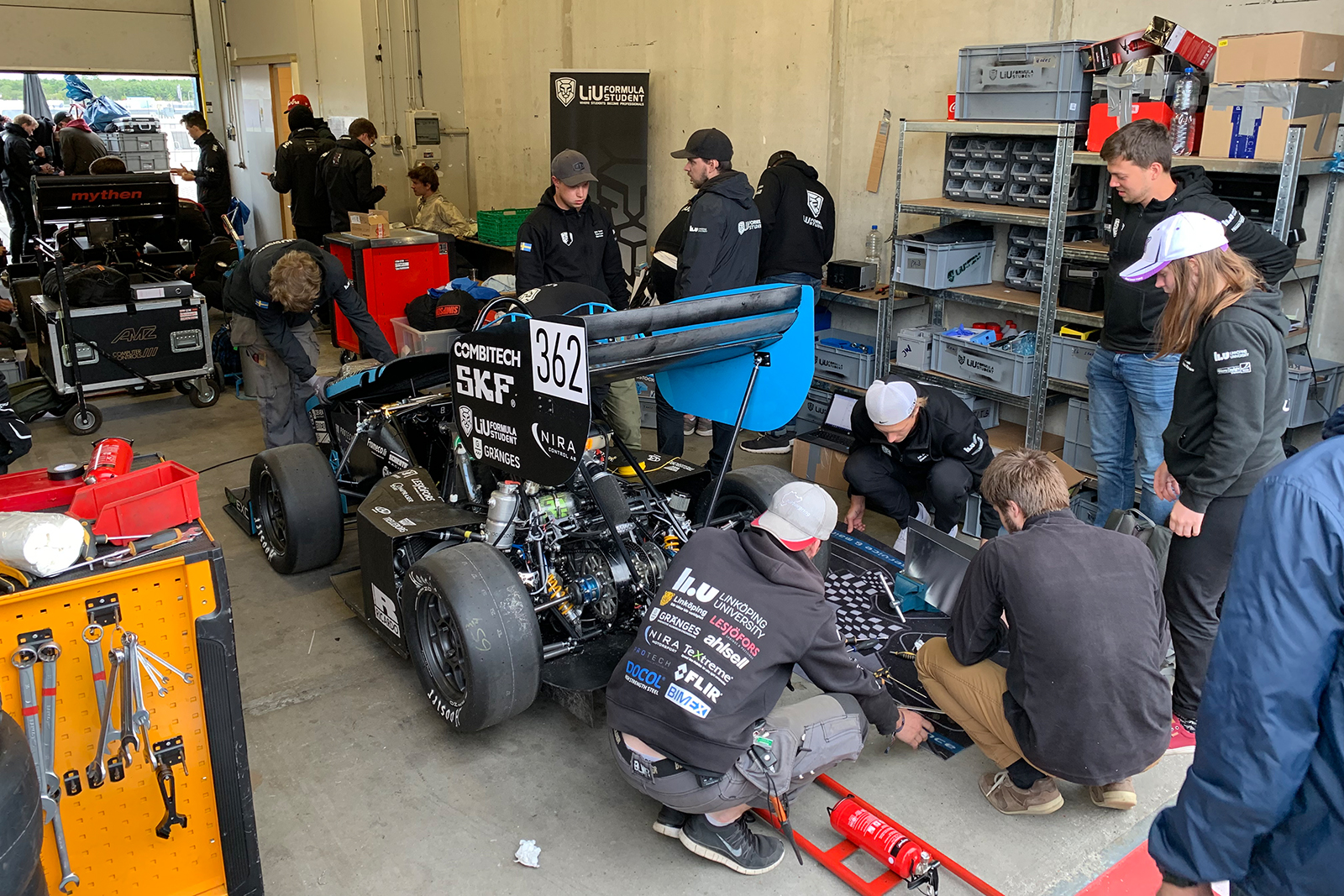
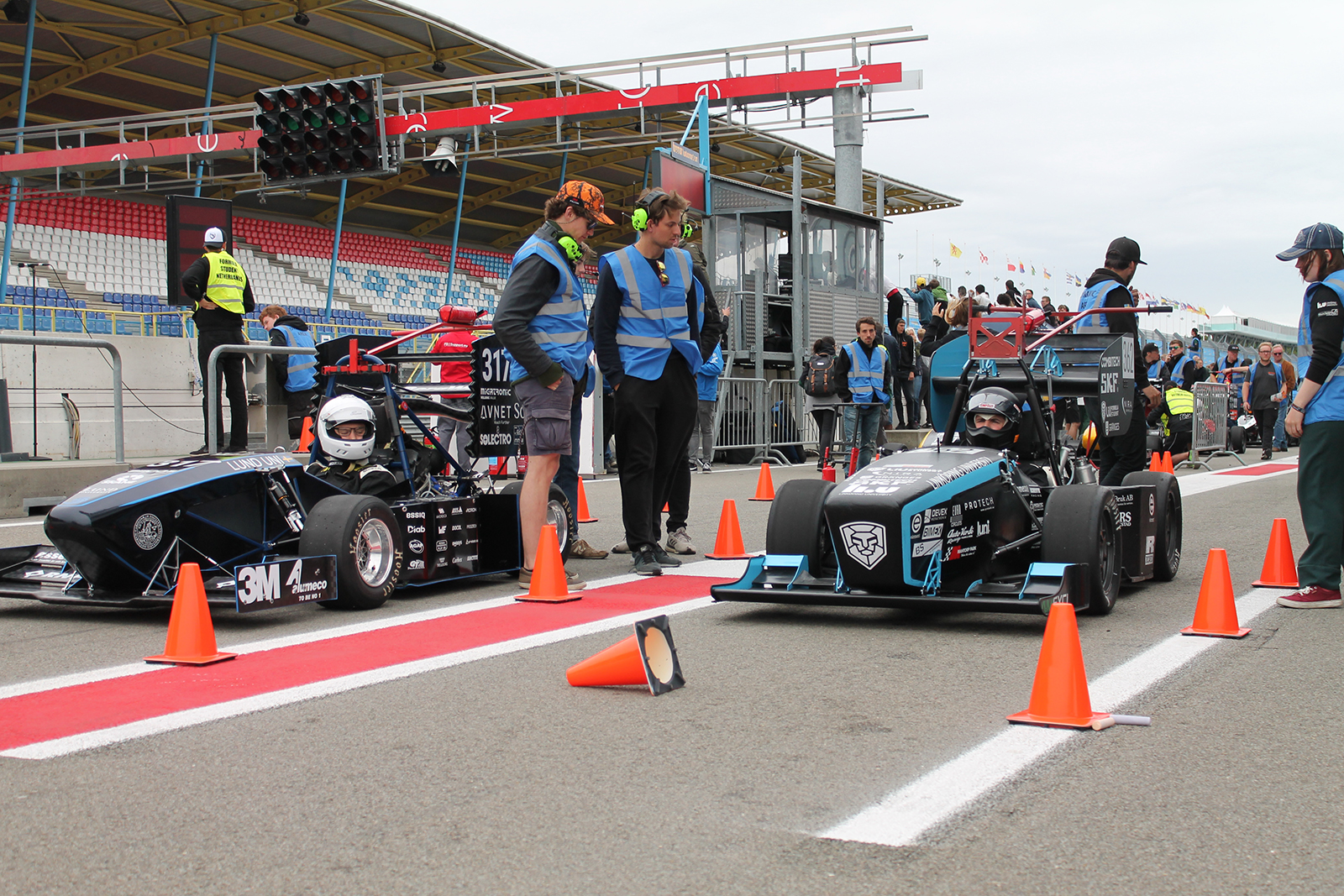
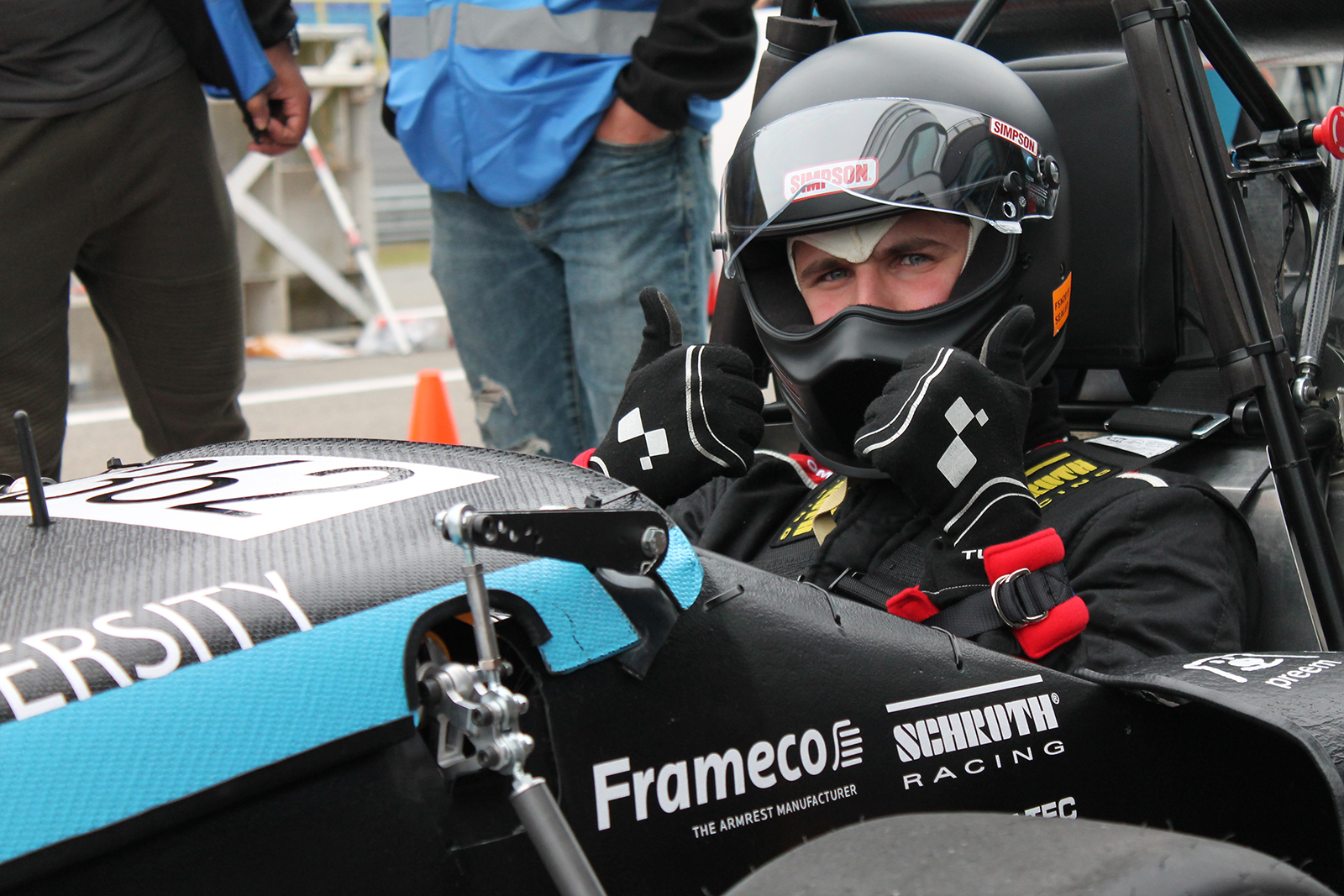

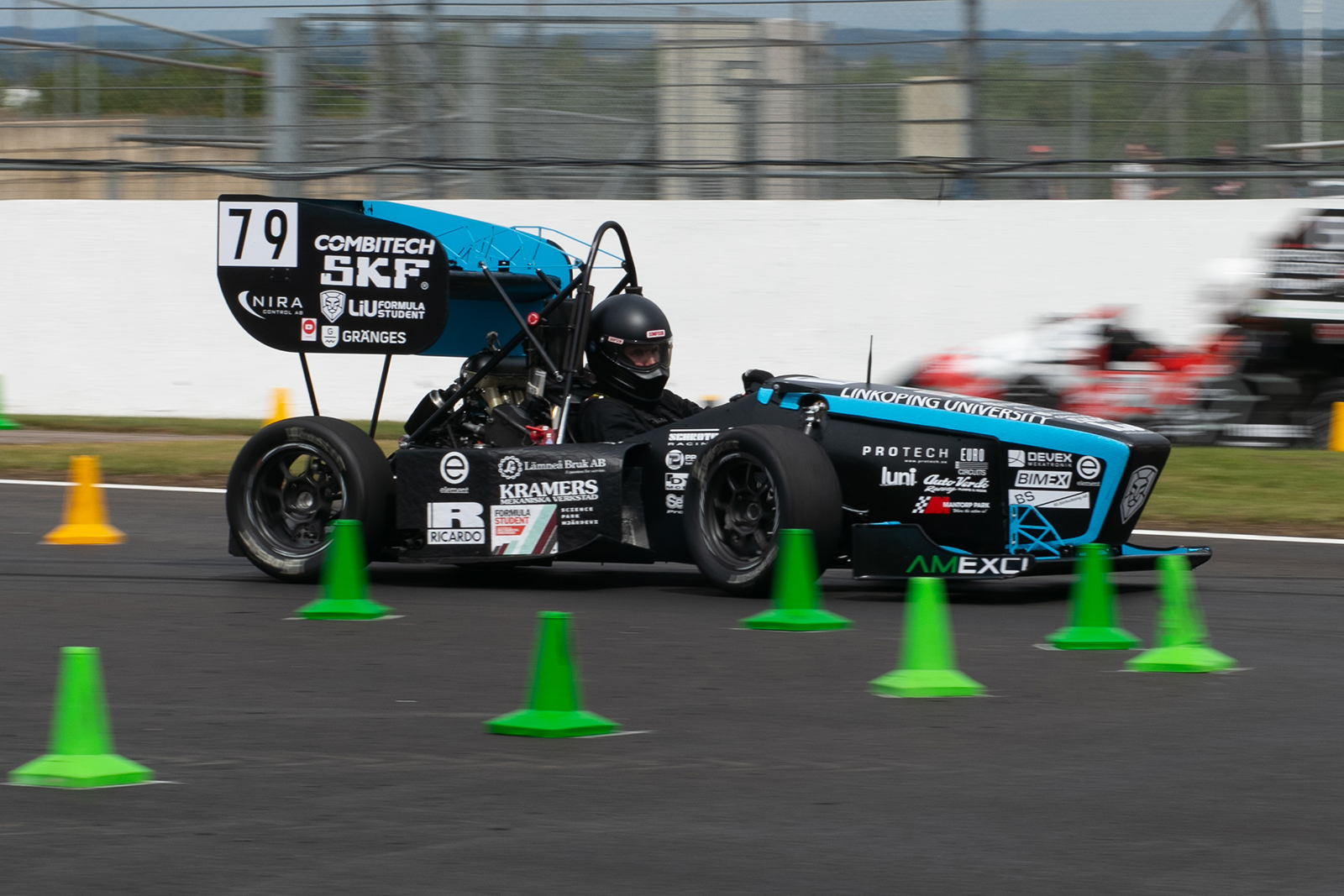
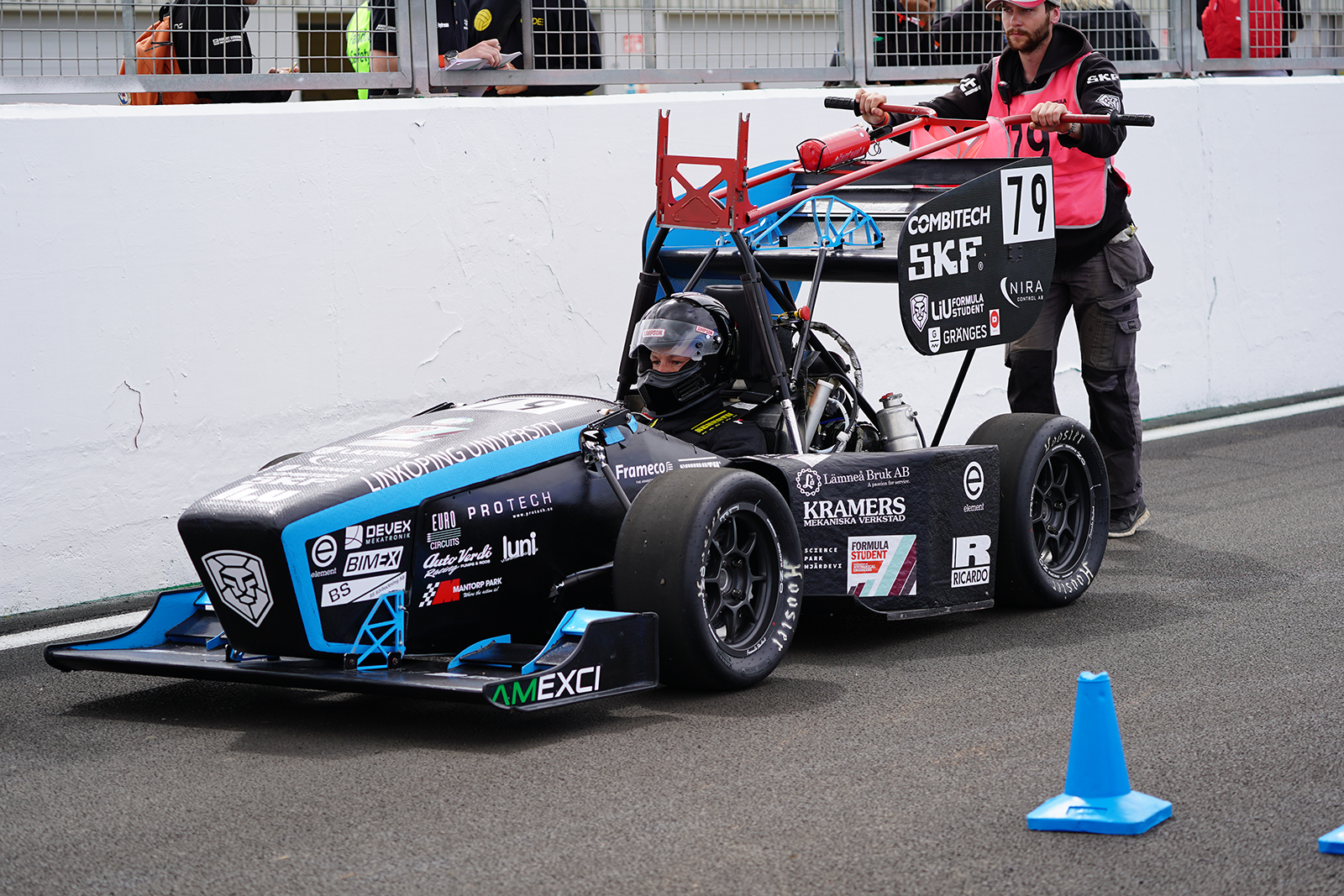
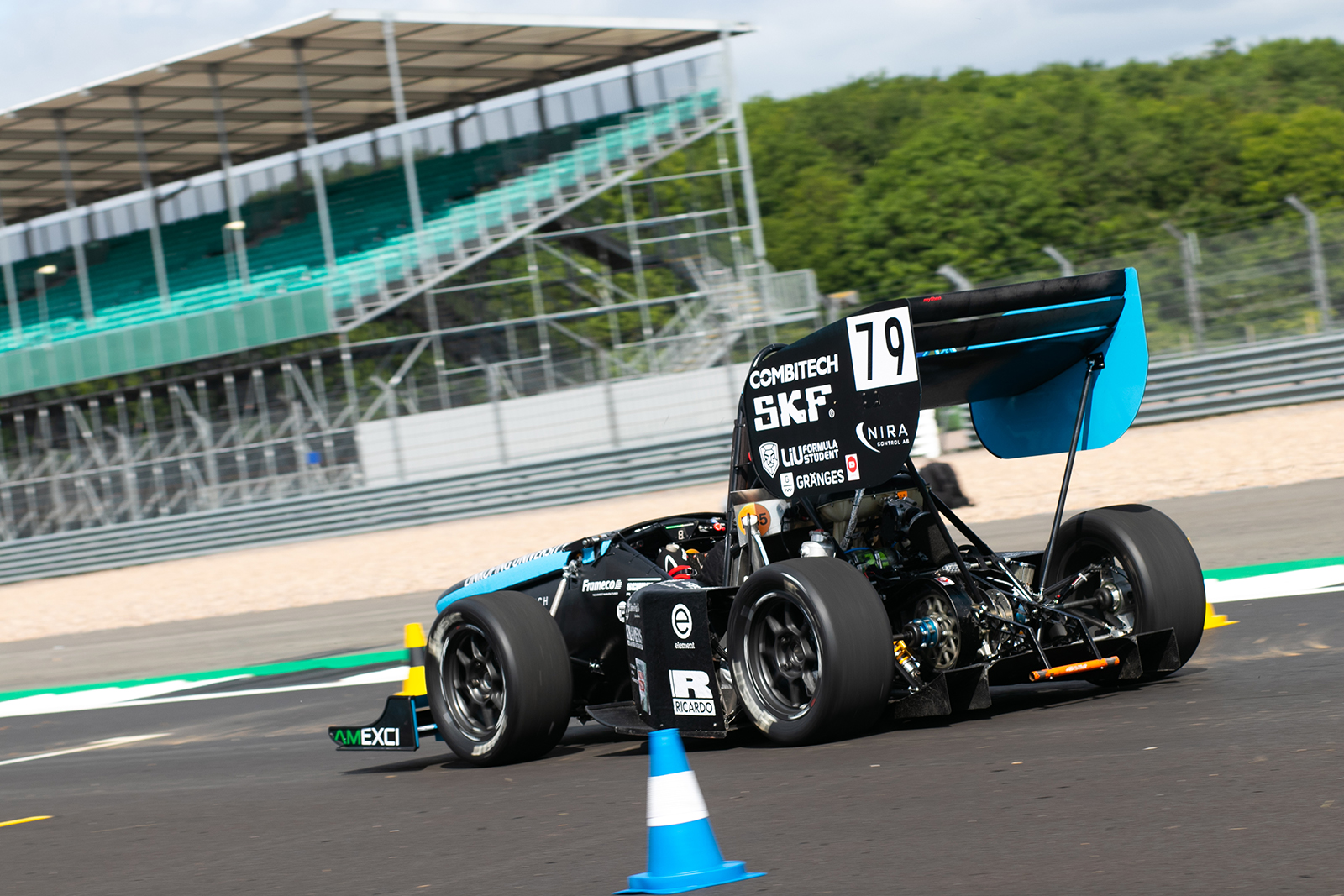
-specifications-
Engine: Honda CBR600RR, 69hp @10500rpm
Differential: Drexler LSD
Chassis: Tubular steel spaceframe
Body: Carbon fibre
Aero: Front and rear wing
Suspension: Double unequal length A-arms, pull-rod, horizontally oriented Öhlins TTX25 dampers
Wheelbase: 1580 mm
Track Width [F/R]: 1160 / 1120 mm
Wheel: 13×7.0″ OZ magnesium rims
Tires: Hoosier 20.0 x 7.5-13″ R25B
Weight: 257 kg
-FSUK-
Overall place: #19 (of 64)
Cost Event: #31
Business presentation: #31
Engineering design: #20
Acceleration: #20
Skid Pad: #21
Autocross: #20
Endurance: #17
Fuel Efficiency: #15
ER
19
"let's get the basics right"
The main technical goal for ER19 was to improve the driveability of car, this ambition influenced every design decision made during the fall. The powertrain was designed to deliver a smoother powerband, while maintaining similar peak power figures. Data collection increased in order to monitor the car behavior and draw parallels between driver feedback and performance trends. The driver position was adjusted with ergonomics in mind. Front and rear suspension was fully redesigned in order to enhance kinematics and cornering behavior. Consequently, the frame was also redesigned to accommodate the new suspension pick up points. The torsional stiffness of the new design was significantly higher than previous years.
The vehicle also marked many firsts for the association. In-house made full prepreg carbon fiber body panels and a partially 3D printed Inconel 718 exhaust system to mention a few. During the summer of 2019 the car competed at FS Netherlands, where an 11th overall placement was achieved. Two weeks later the car competed at FSUK, where the team finished 19th.
-FSN-
Overall place: #11 (of 28)
Cost Event: #14
Business presentation: #23
Engineering design: #17
Acceleration: #14
Skid Pad: #-
Autocross: #12
Endurance: #9
Fuel Efficiency: #8
ER
20
"tighten up and simplify"
After the great results obtained with ER19, the ER20 management started the project with high ambitions. The goal was to reduce the weight, as well as to increase the performance and reliability. Data-driven decisions should guide the development. Big changes were made to the car, including a completeley new tubular steel frame, a new suspension geometry and significant changes to the aerodynamic package. The design finished before christmas 2019 and the production started in early 2020.
Unfortunately, with the COVID-19 pandemic reaching Europe, the work was stopped in March 2020 and no further work on the car was possible for several months. As a result, all european competitions were cancelled, which was sad as LiU Formula Student for the first time qualified for FS Austria. While a few dedicated members continued the work during summer 2020, the car was unfortunately not finished. But still today, a few designs and parts continue to live in ER21.
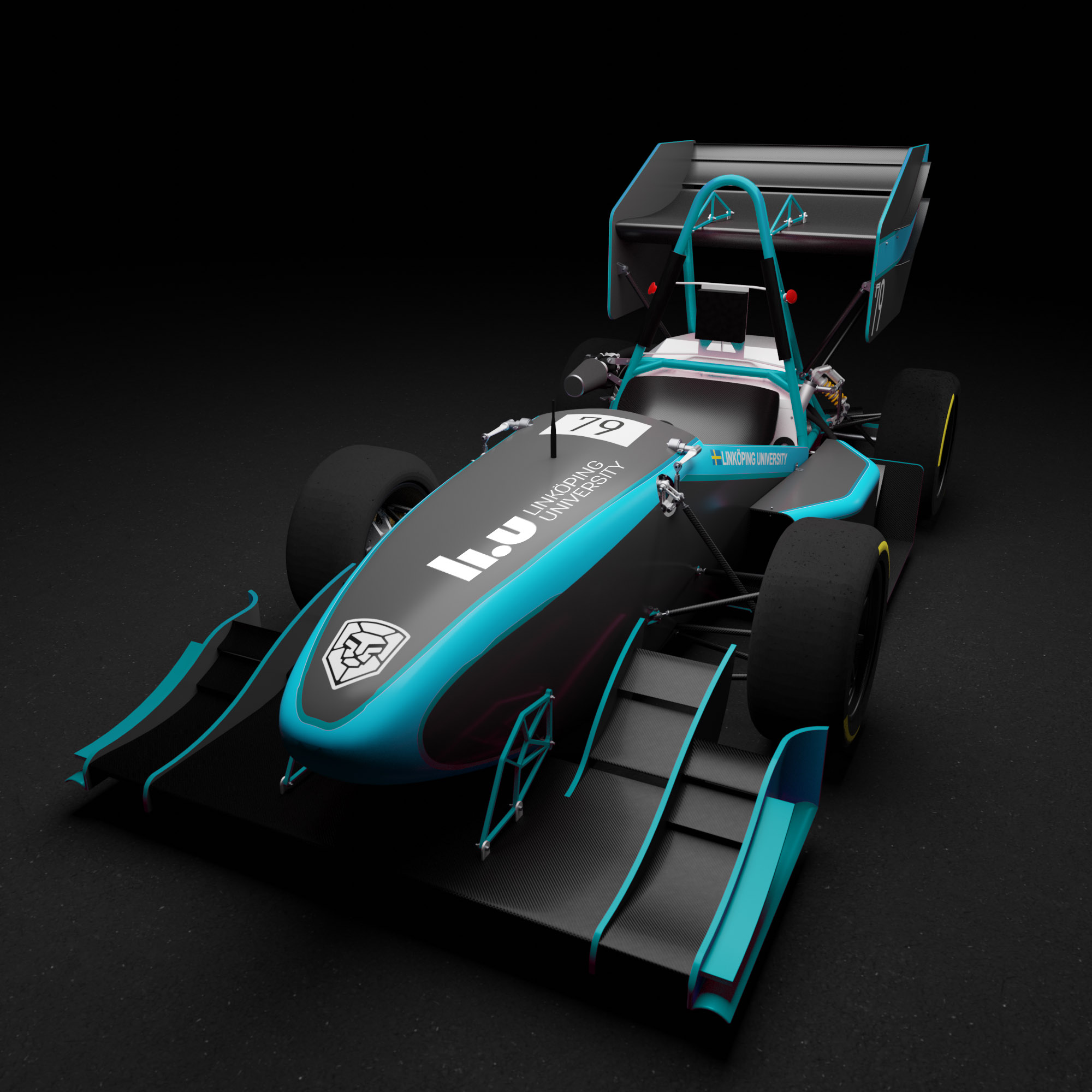
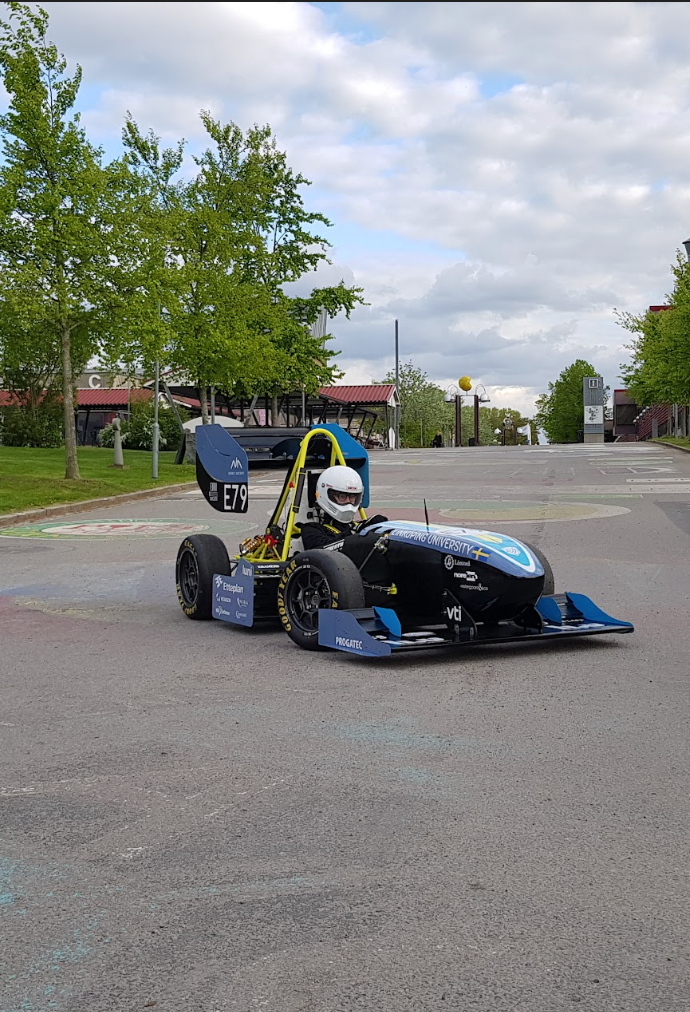
ER
21
"FIRST EV"
The change towards electric mobility is not only visibible on the streets around us, also the Formula Student competition is changing. In 2019, Formula Student Germany announced that the combustion class will be phased out over the coming years. We in LiU Formula Student did some early studies to investigate the change towards EV, but never fully comitted to an electric car. Until 2020.
With the onset of a global pandemic in March 2020, all physical work on the ER20 car was stopped and the university went into distance mode. The newly elected ER21 management, together with the ER20 management, decided to use the time at home to start developing ER21. And with half a year of extra time, we comitted to go electric.
The main goal of ER21 was to develop competencies to design and build an electric race car. The car should be as simple as possible, therefore a single motor in the rear and a convential drive train with differential was chosen. The suspension was only slightly modified in comparison to ER20 and the aerodynamics package was further improved. Preassembled modules were used for the battery and an own battery management system was developed.
Both the change to EV, as well as the COVID-19 pandemic challenged us throughout the year. While we were able to finish the car mechanically, the integration of all electric circuits gave us serious headaches and ultimately ended in us not being able to finish the car in time for competition. Still, LiU Formula Student took a huge leap towards electrifying our organisation and laid the foundation for future success.
ER
22
"FIRST EV - AT COMPETITION"
The switch to electricity had been made the previous year during the ER21 project and the ER22 management saw the potential in continuing on the electric path even though the electric systems were not finished during ER21. It was evident that these systems were challenging to create and integrate into ER21; therefore, much of the ER21 concept was kept completely or as inspiration during the design and production of the ER22 car.
To reach the ER22’s goals of creating a competition-ready electric car, the team held several recruitments at the University, all of which were successful and resulted in the association reaching its highest member count of around 90 people. Even though the team was 90 members strong, the biggest challenge in the project was the lack of members with electrical knowledge, especially regarding high-voltage. This meant that a small number of people had a lot of responsibility and spent long hours designing and building high-voltage electrical systems.
Due to this huge undertaking of crucial members, some of the milestones regarding the high-voltage systems were delayed during production. However, the design milestones were passed and the mechanical production deadlines were met as expected. The ER22 car was thus mechanically finished in March and after a lot of hard work from the Power Electronics team, the first electrical drive was done in June. At the start of August, only 24 hours before departure to the long-awaited competition, ER22 was completely competition-ready.
ER22’s steel frame, steel battery container, and carbon fiber aerodynamic pack passed the scrutineering at the FSEast competition. The car’s battery consists of Sony VTC cells, 144 packs in series with 600 V. The cells weigh around 40 kg and give the car a capacity of 8 kWh. The high-voltage electronic systems passed the first electric scrutineering step at FSEast. The motor in ER22 is an axial flux AC machine from Emrax, which gives the car a peak horsepower of 148.
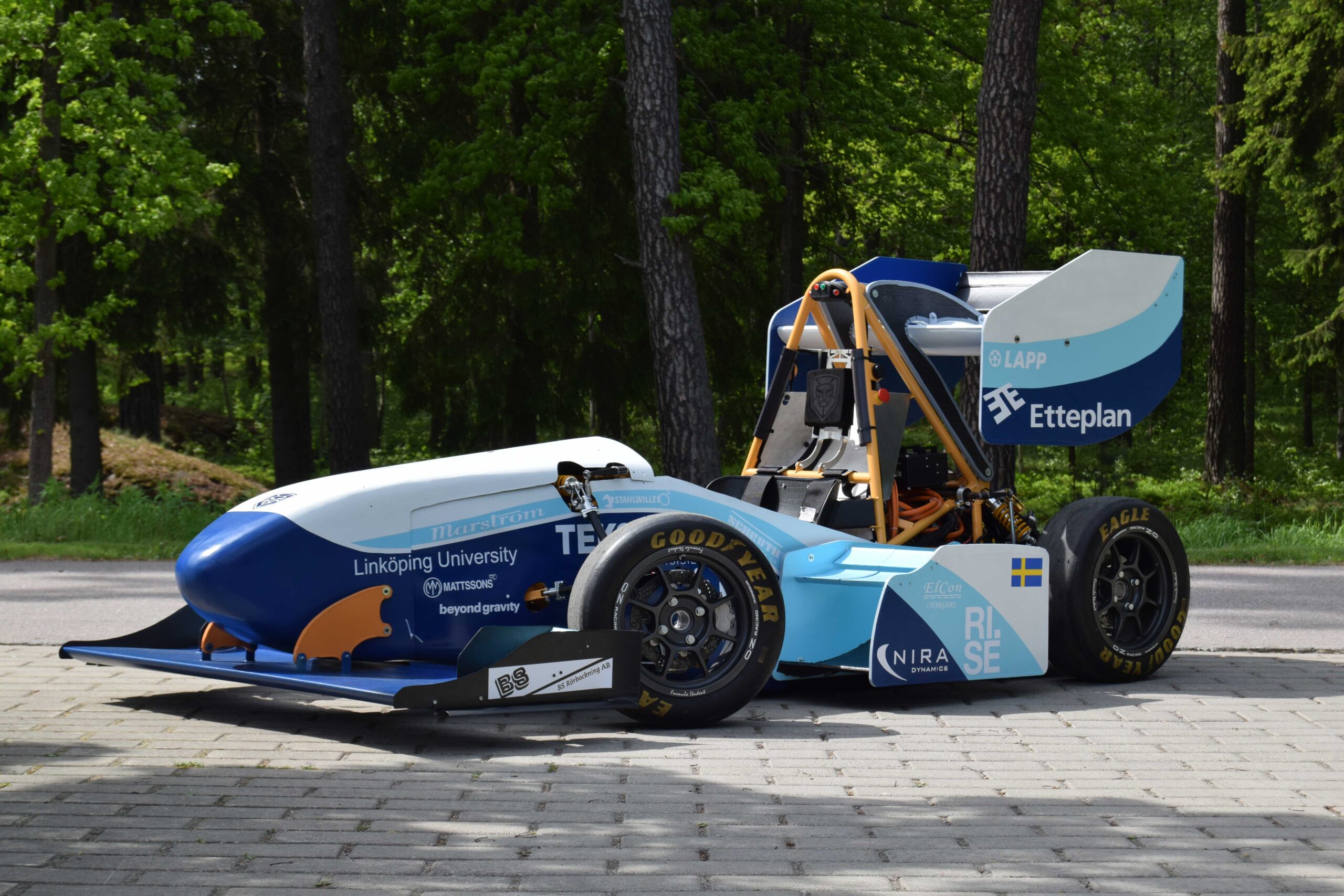
-specifications-
Motor: EMRAX 228 HV LC, (100kW peak, 42kW continous)
Inverter: UniTek BAMOCAR-PG-D3-700/400
Battery Cells: 720 x Sony VTC6 18650 cells (preassembled as Energus Li1x5pVTC6T)
Battery Configuration and Voltage: 144s5p – 600V
Battery Capacity: 8.0 kWh
Differential: Drexler FS2016 LSD
Chassis: Tubular steel spaceframe, Docol R8
Body: Carbon fibre panels
Aero: Front Wing, Side Aero, Rear Wing and Diffuser. Cl = – 2.7
Suspension:Double unequal length a-arms with pushrods, horizontally oriented Öhlins TTX25 dampers
Wheelbase: 1585mm
Track Width [F/R]: 1200 / 1180 mm
Wheel: 13×7.0″ OZ magnesium rims
Tires: Goodyear 20.0 x 7.0-13″
Weight: 264 kg
-FS East-
Overall place: #24 (of 33)
Cost Event: #21
Business presentation: #8
Engineering design: #24
Acceleration: #-
Skid Pad: #-
Autocross: #-
Endurance: #-
Fuel Efficiency: #-

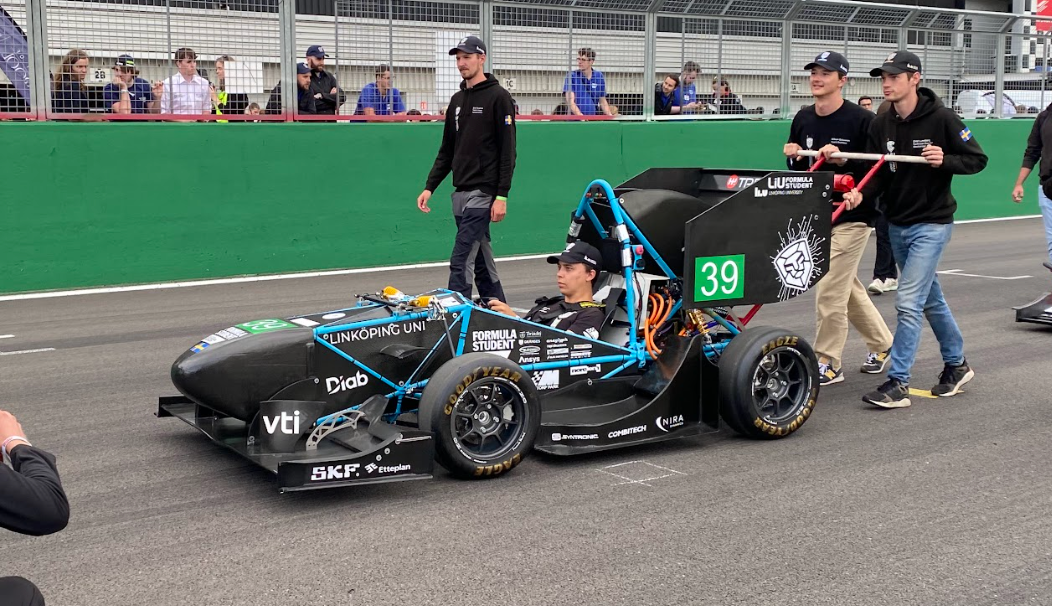
-specifications-
Motor: EMRAX 228 HV LC, (100kW peak, 42kW continous)
Inverter: UniTek BAMOCAR-PG-D3-700/400
Battery Cells: 720 x Sony VTC6 18650 cells (preassembled as Energus Li1x5pVTC6T)
Battery Configuration and Voltage: 144s5p – 600V
Battery Capacity: 8.0 kWh
Differential: Drexler FS2016 LSD
Chassis: Tubular steel spaceframe, Docol R8
Body: Carbon fibre panels
Aero: Front Wing, Side Aero, Rear Wing and Diffuser. Cl = – 3.5
Suspension:Double unequal length a-arms with pushrods, horizontally oriented Öhlins TTX25 dampers
Wheelbase: 1535mm
Track Width [F/R]: 1200 / 1200 mm
Wheel: 13×7.0″ OZ magnesium rims
Tires: Goodyear 20.0 x 7.0-13″
Weight: 250 kg
-FSN-
Overall place: #19 (of 33)
Cost Event: #27
Business presentation: #16
Engineering design: #21
Acceleration: #-
Skid Pad: #-
Autocross: #-
Endurance: #-
Fuel Efficiency: #-
-FSuk-
Overall place: #36 (of 63)
Cost Event: #33
Business presentation: #18
Engineering design: #23
Acceleration: #-
Skid Pad: #-
Autocross: #-
Endurance: #-
Fuel Efficiency: #-
ER
23
"The year's a climb. But the view is great."
Work on the electrical system continued during the ER22 and due to the car not being able to be tested, it was decided early on to try to build on and improve the already existing systems to try and reduce the workload. The biggest mechanical development would be by making a hybrid chassis with a half-monoquque front and a steel frame at the rear.
In order to reach the ER23’s goal of having a running car at the races, the team carried out a major recruitment drive in the fall semester, which resulted in a new record number of members at a whopping 125. The challenge, however, still lay in the lack of electrical knowledge around high voltage. This therefore led to the fact that even during this project, as before, the team became completely dependent on a few people who took on a very large responsibility.
During this year, several obstacles have been encountered. The first was that we got rid of the cloud storage of all CAD files at the beginning of the project, which of course made the project more difficult. At the start of production, the chassis was also delayed in several ways, which ultimately resulted in two steel frames being bolted together instead of the original plan. Because of this delay, even the electrical team and especially the high voltage team had even less time to set up and test their systems.
June 6th our inverter broke and since it is a very expensive part we have not had one in reserve. We thought here that the project came to an end with only 1 month left until the first competition start. In the blink of an eye, we contacted the manufacturer and had it sent down to Germany where it was then repaired. However, this had set us back about 3 weeks.
At least we made it to both competitions where FSN was first. With tornadoes and thunderstorms expected, it was clearly going to be an eventful race. The electrical was further worked on and the mechanical was approved. Unfortunately, not everything could be fixed and we therefore only participated in the static moments.
Our second competition was FSUK where we passed both safety and tech scrut. Elscrut went well and only a few things remained before it could have been approved if the accumulator was in. Unfortunately, the PCB that controls the voltage indicator on the TSAC broke and the time was too short to fix it unfortunately. We fell short of the finish line but still feel satisfied after this challenging year.
ER
24
Loading….


